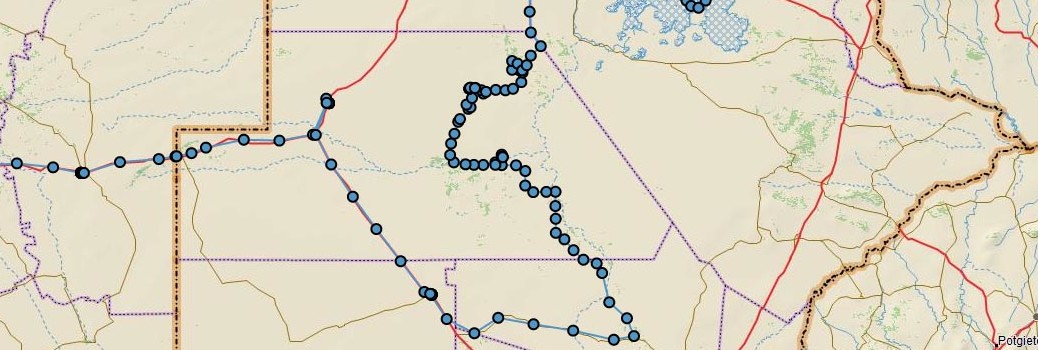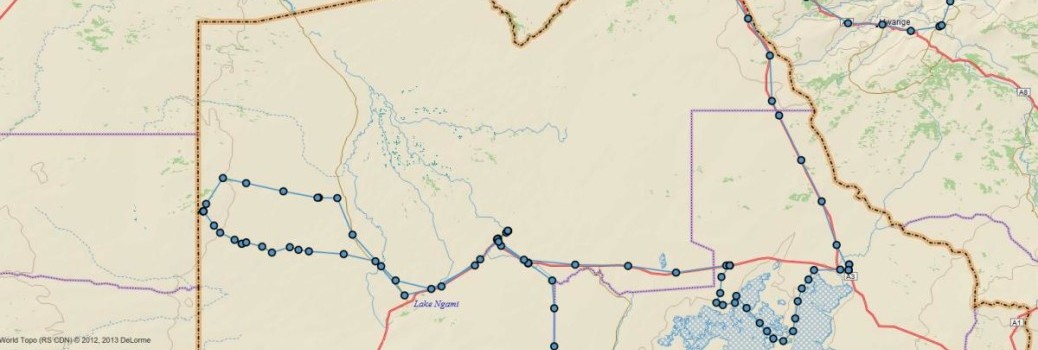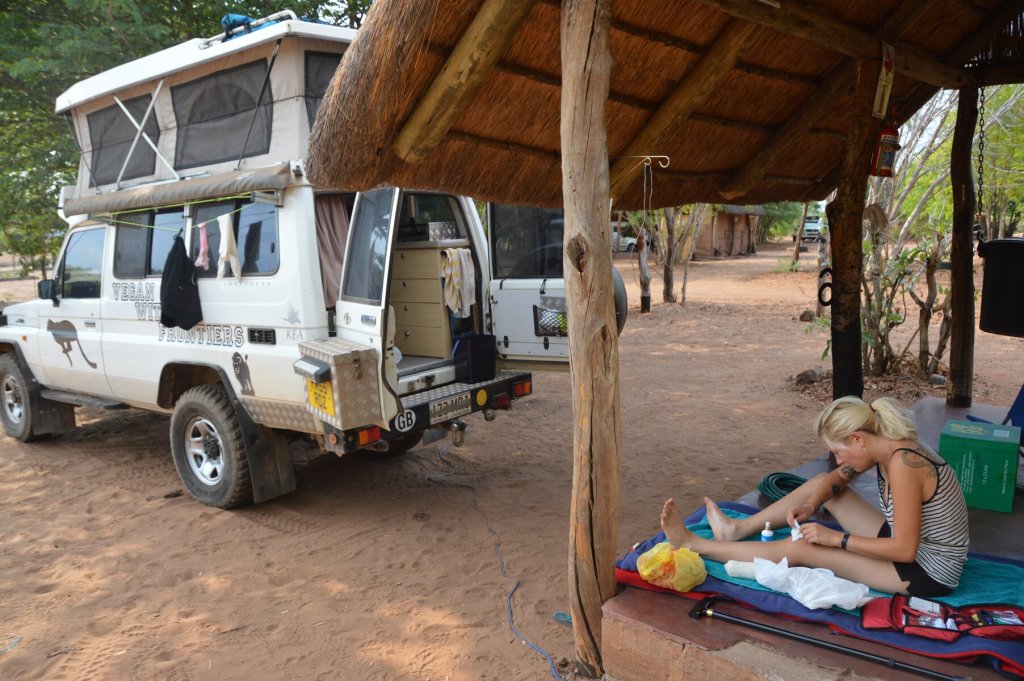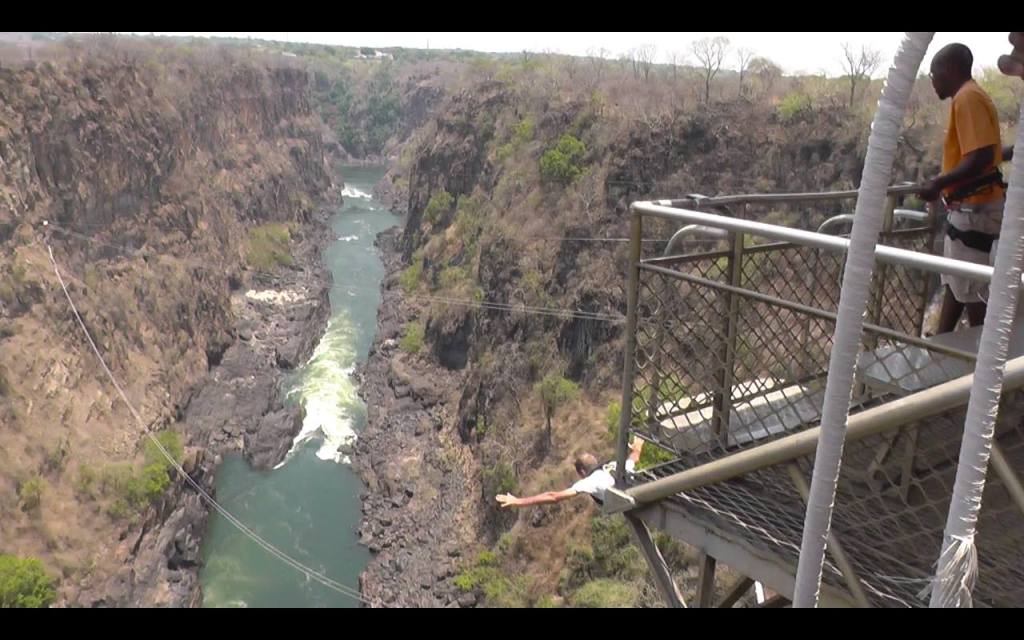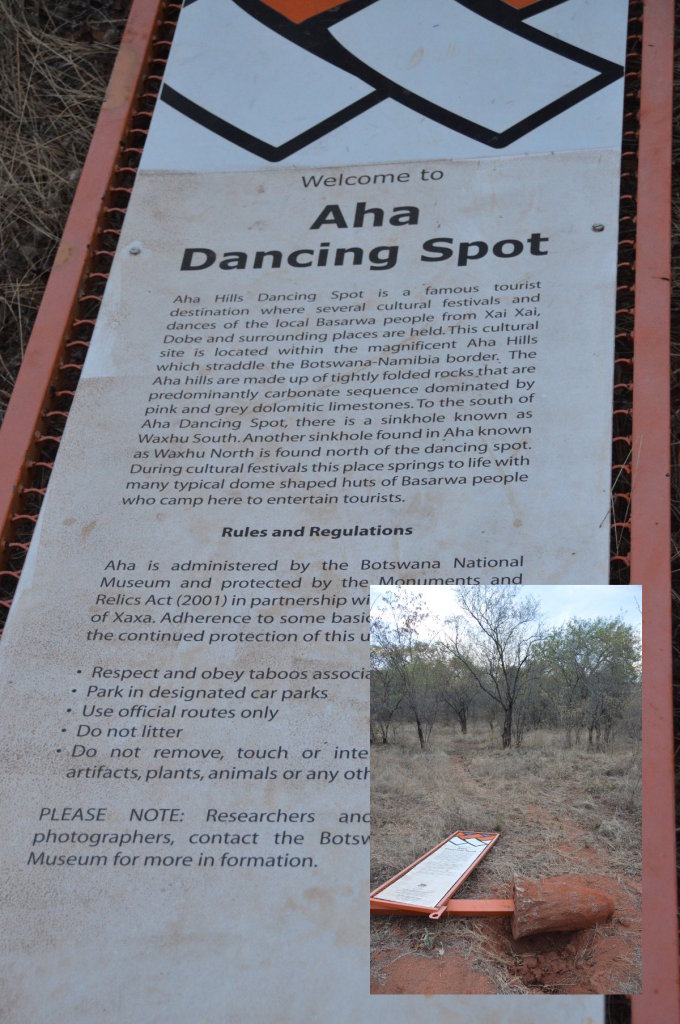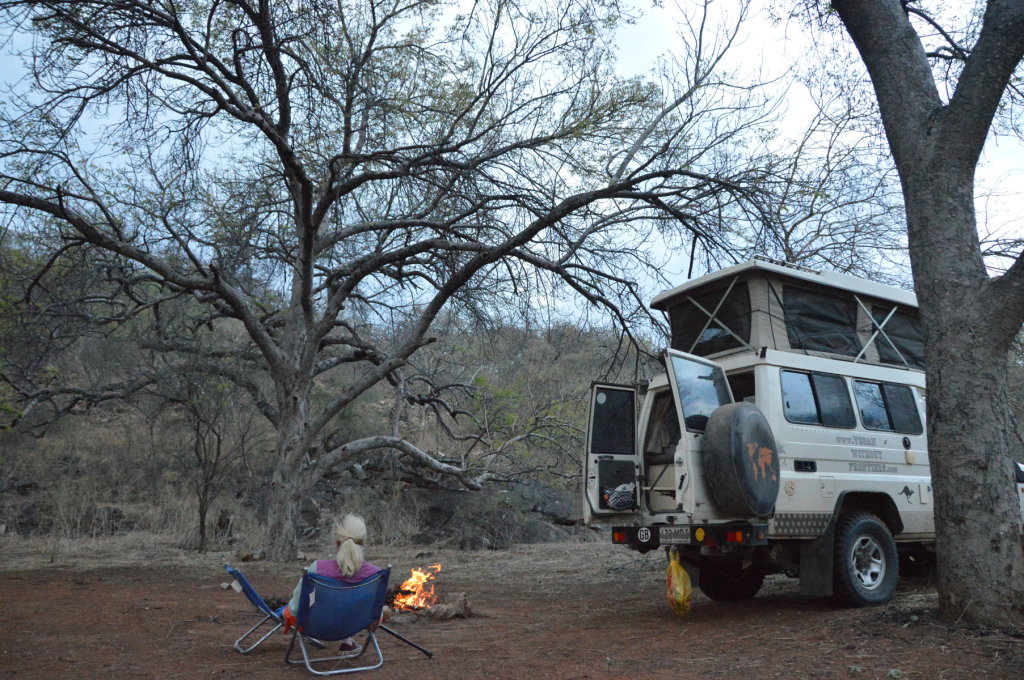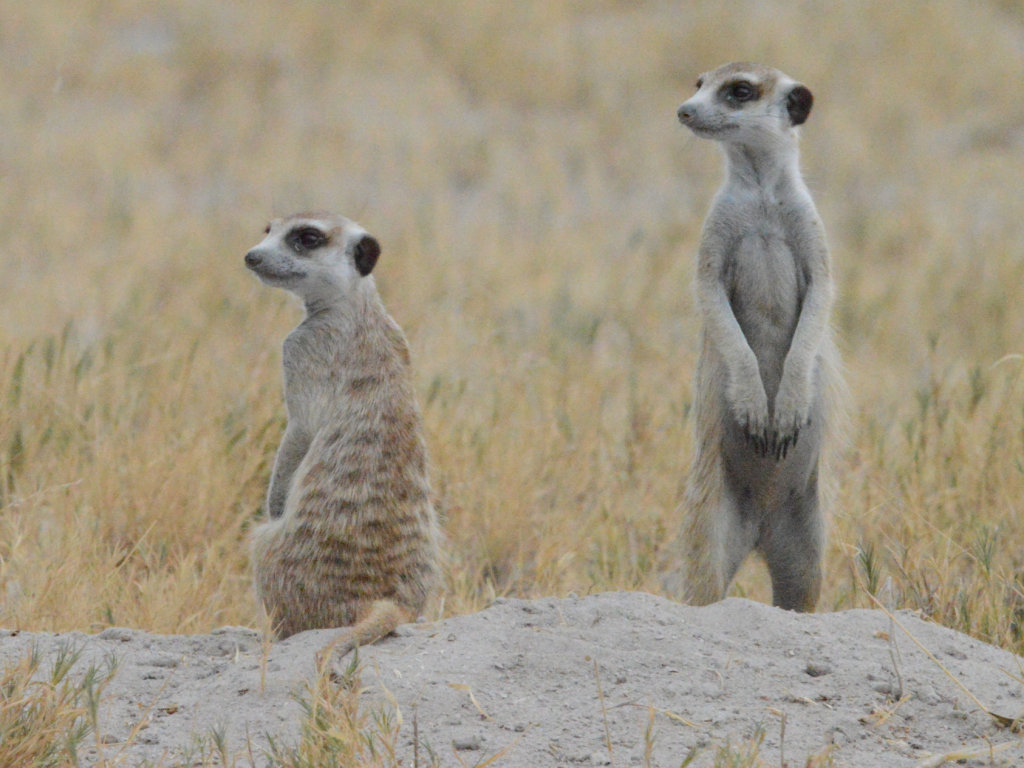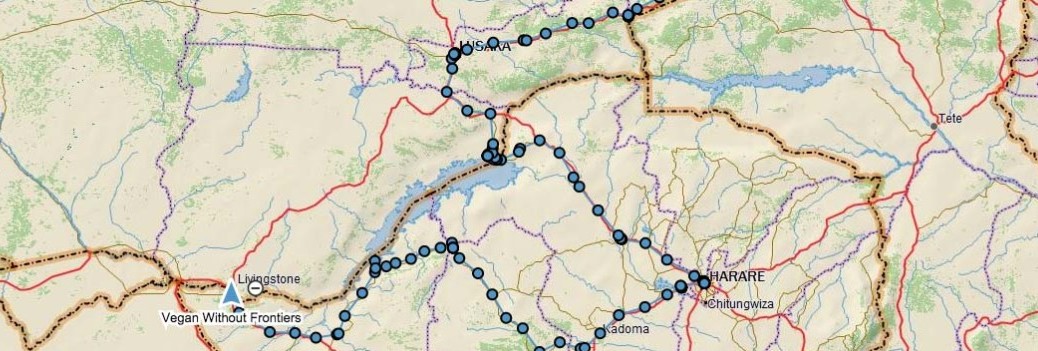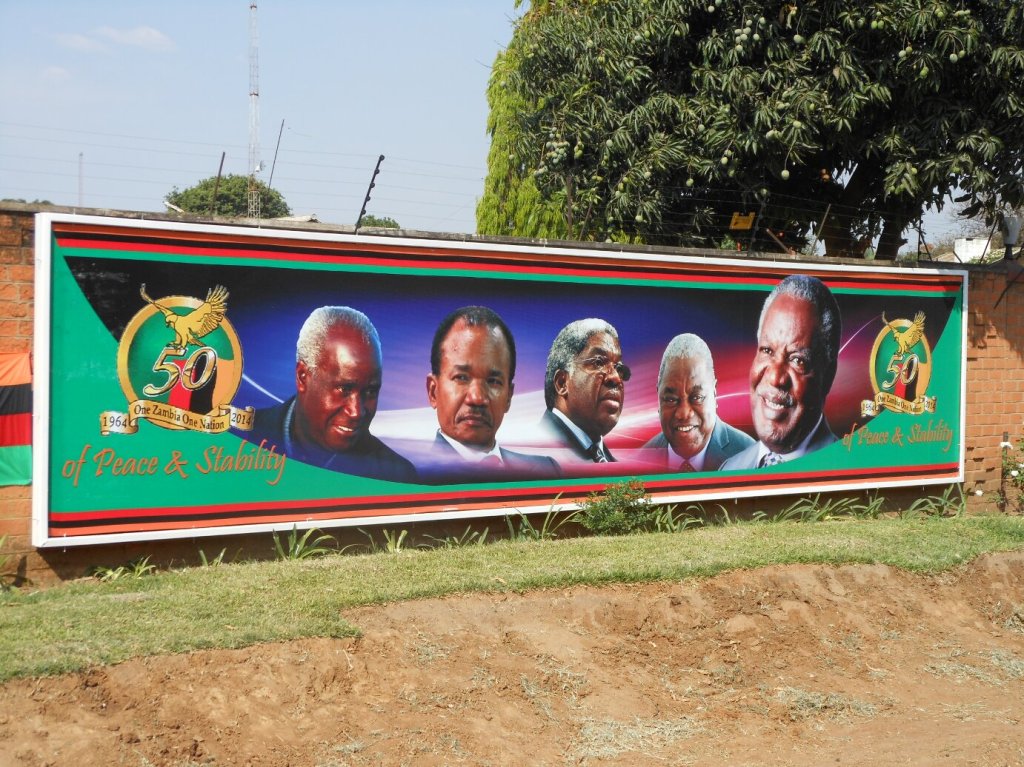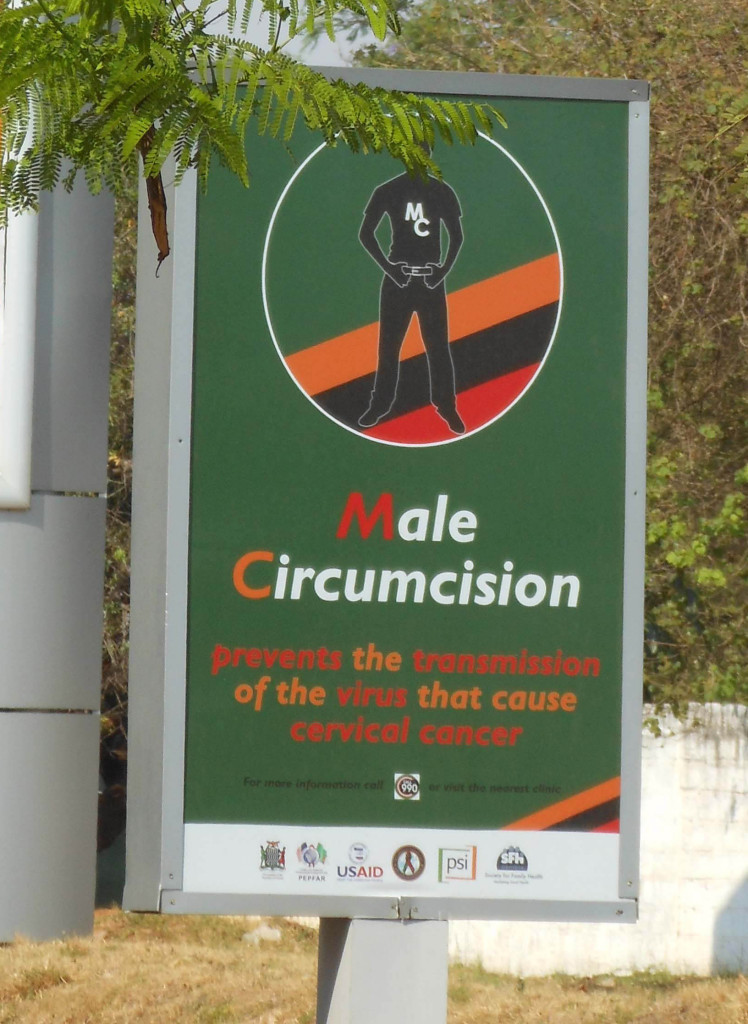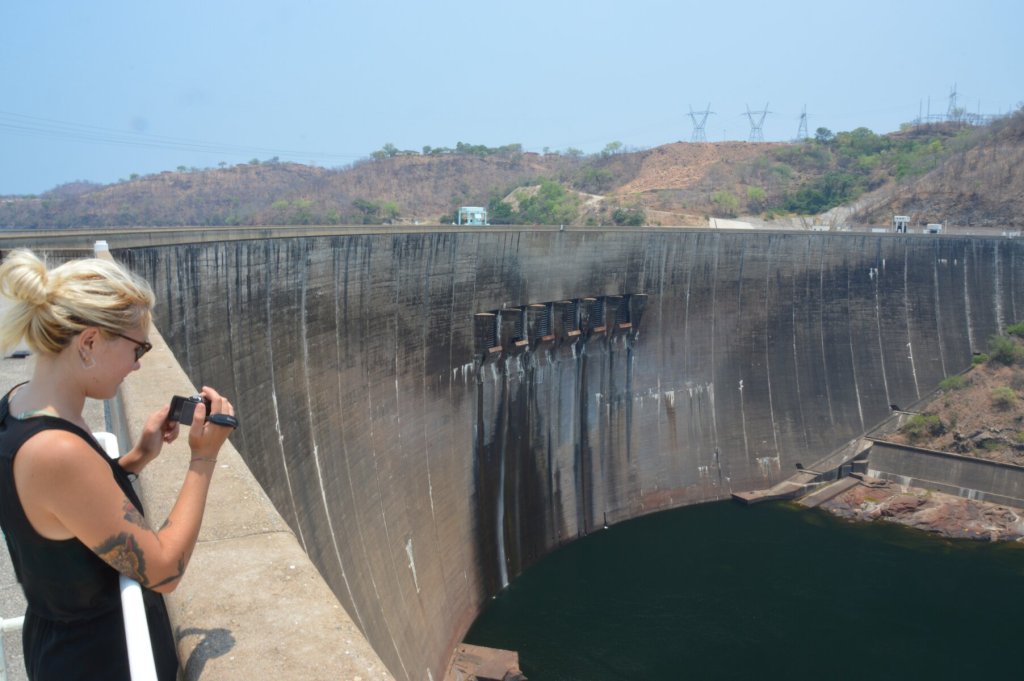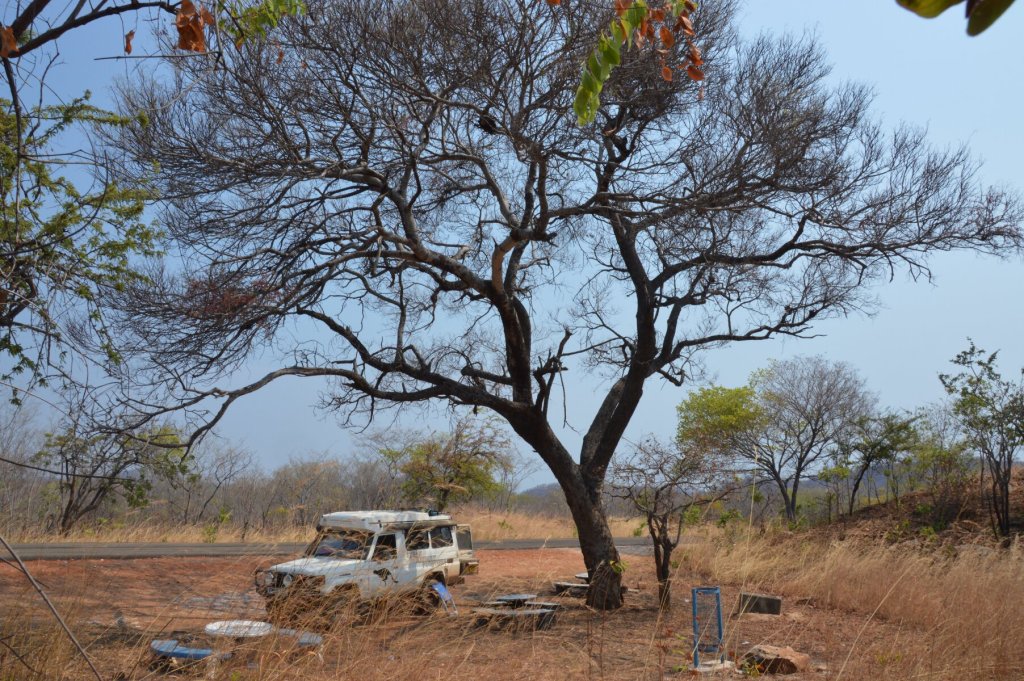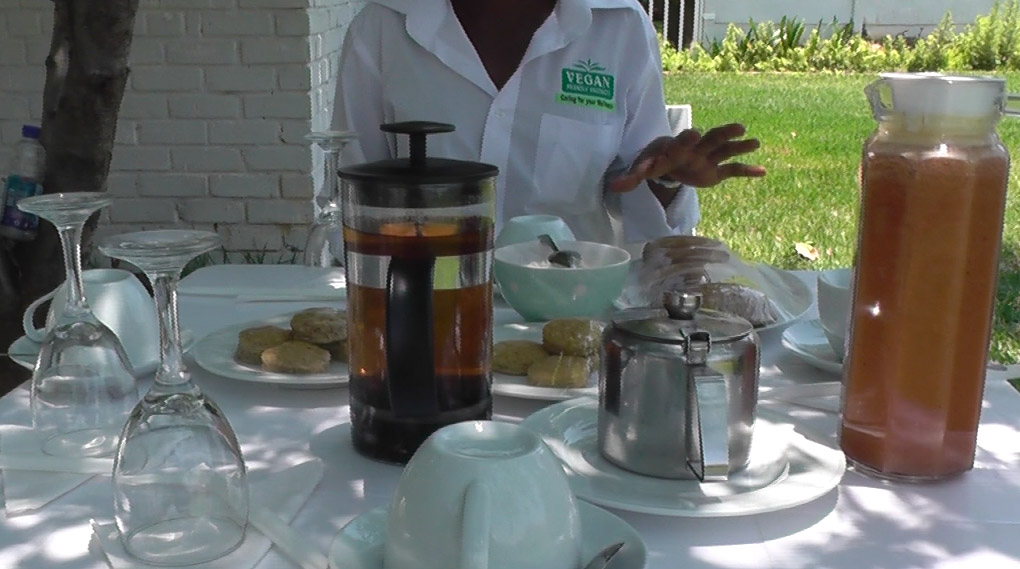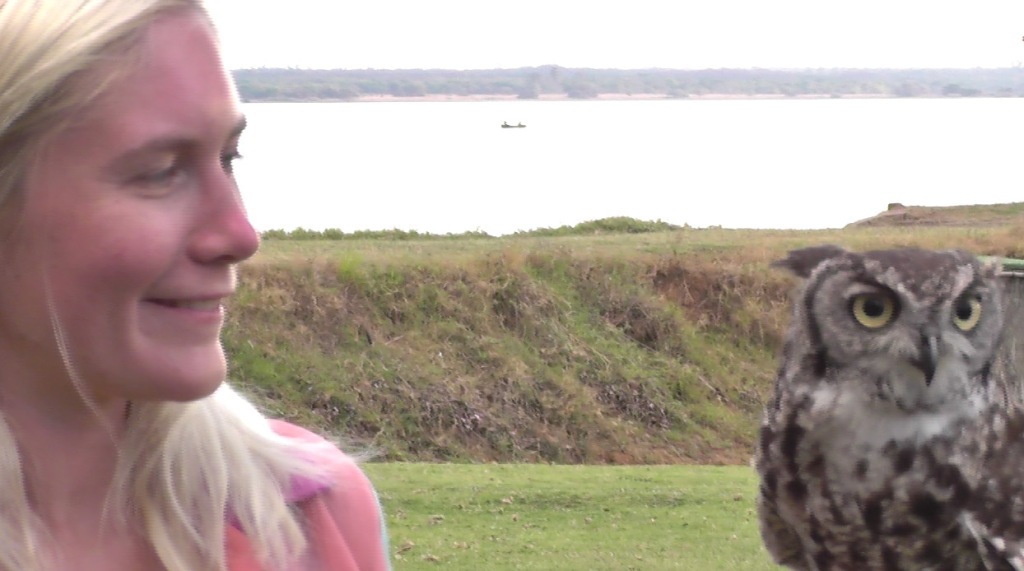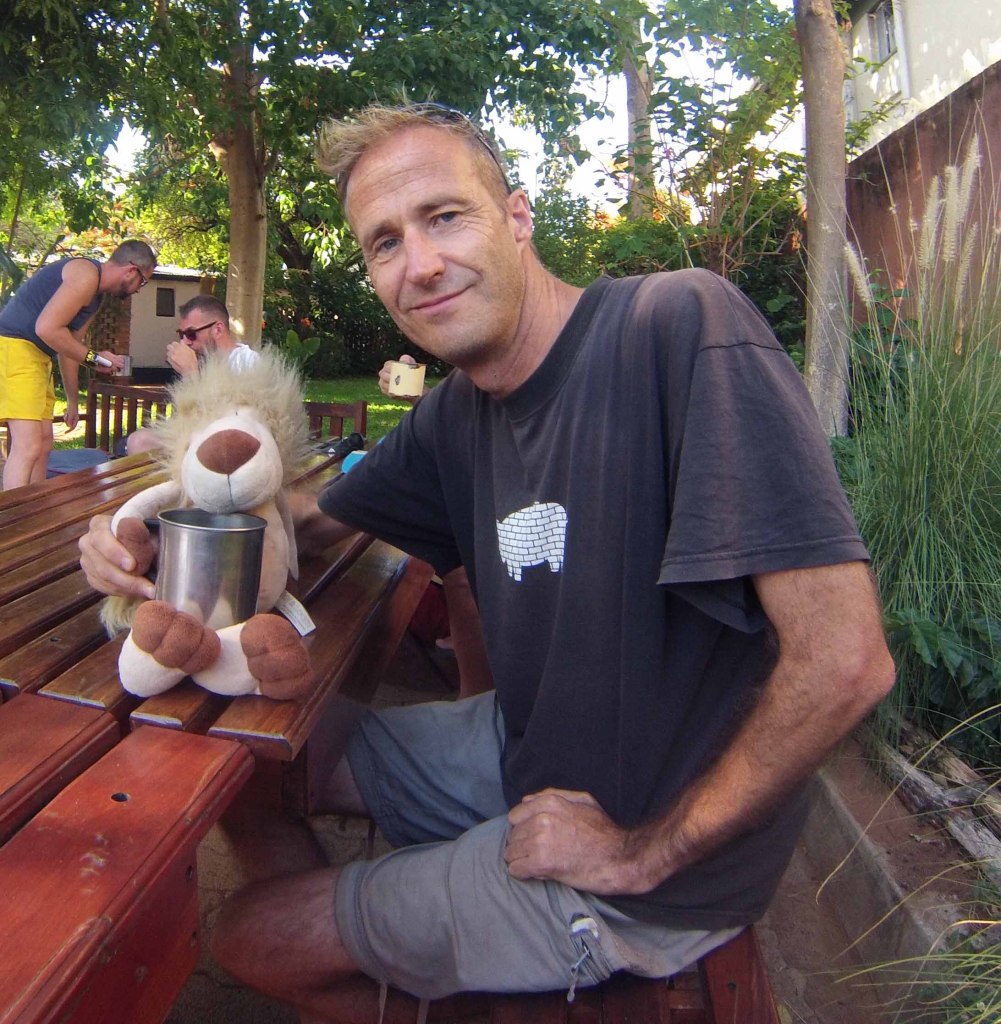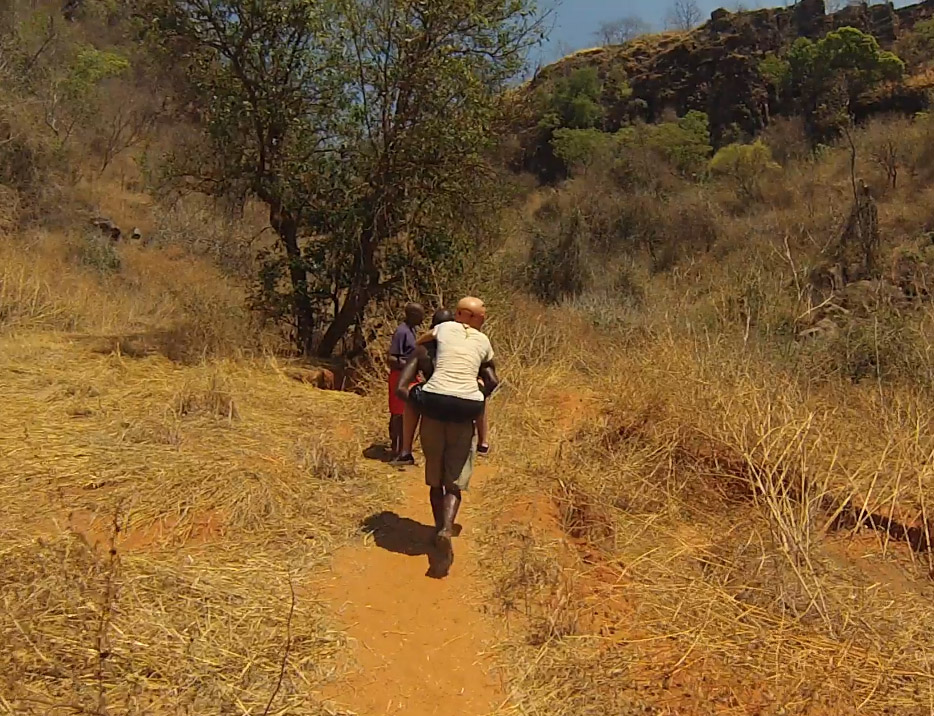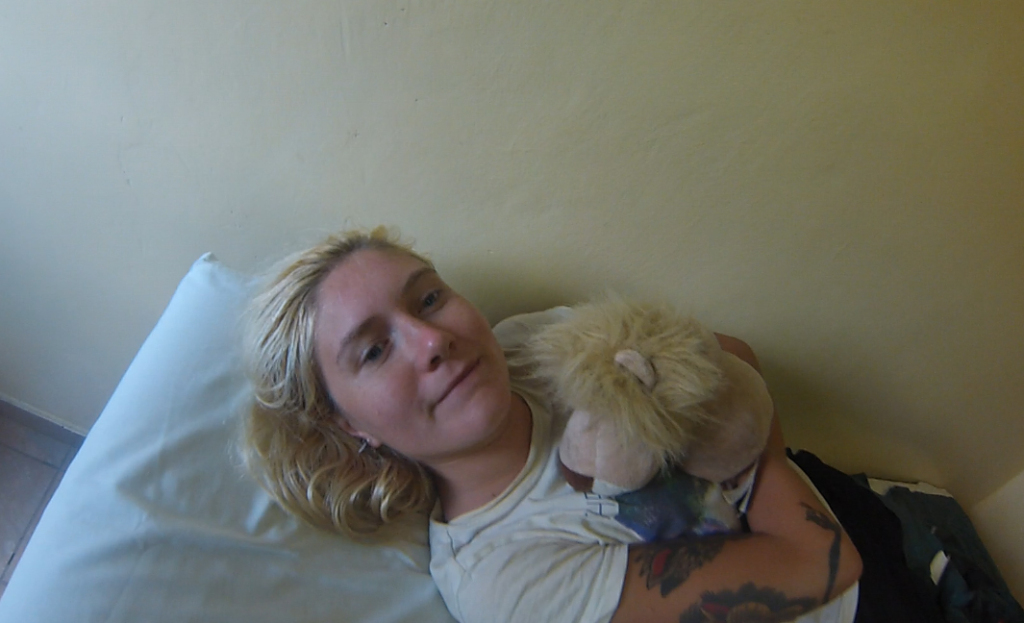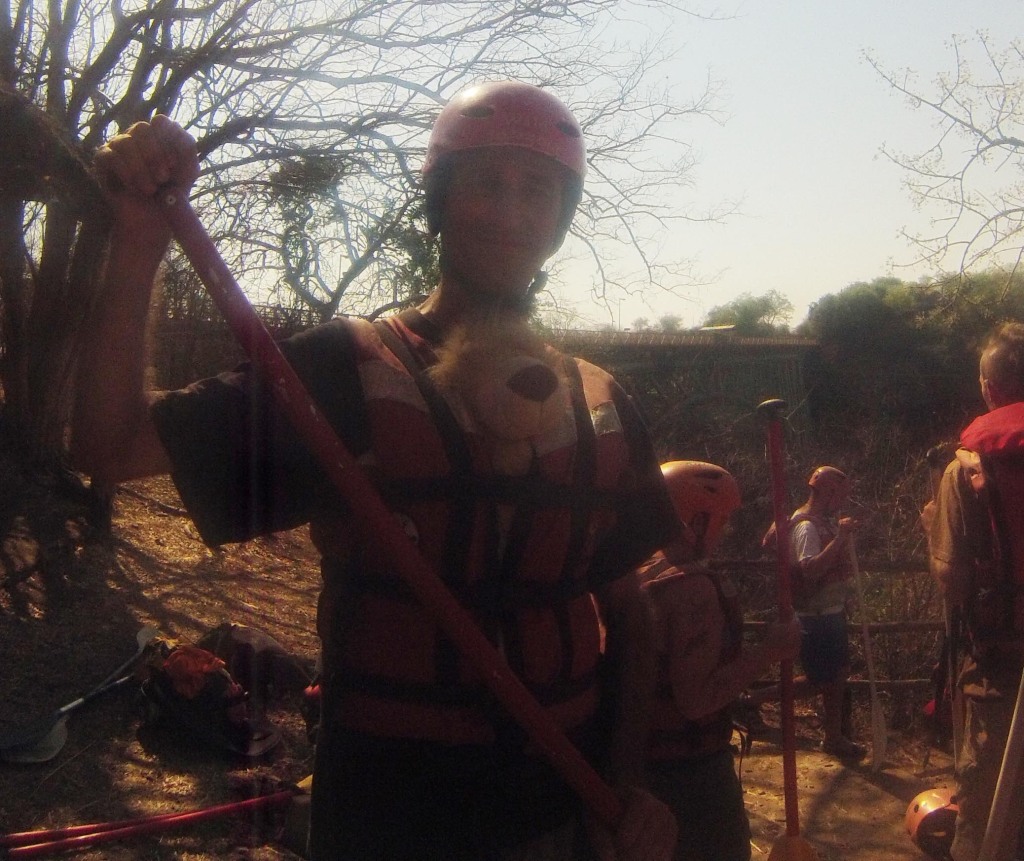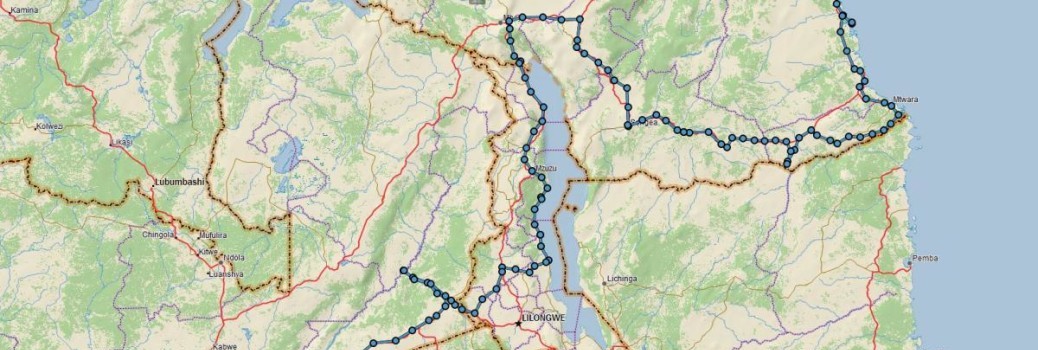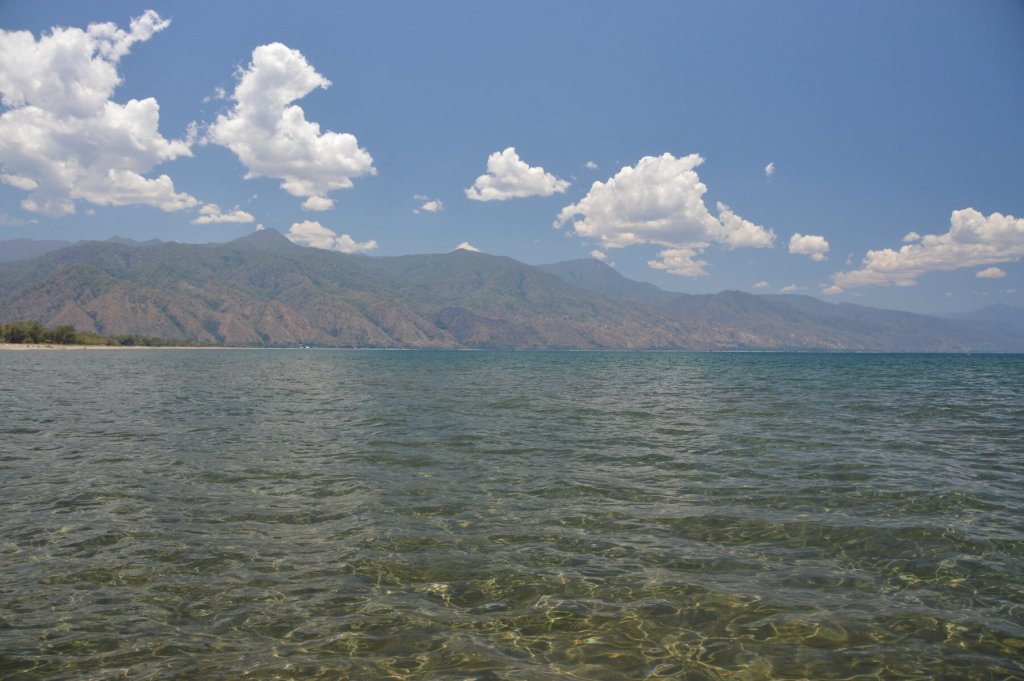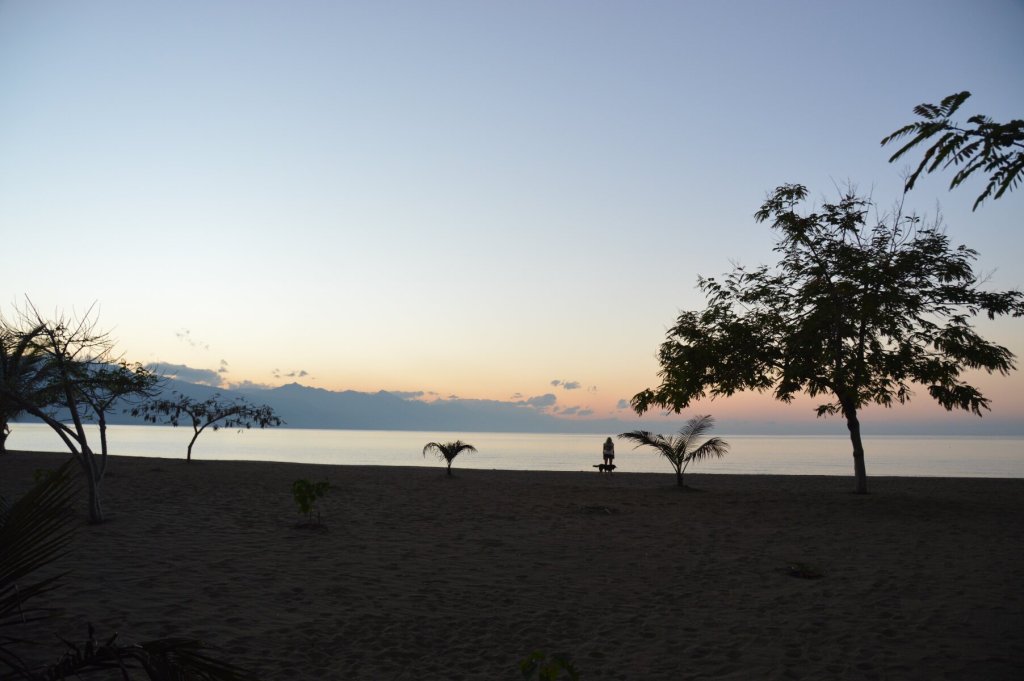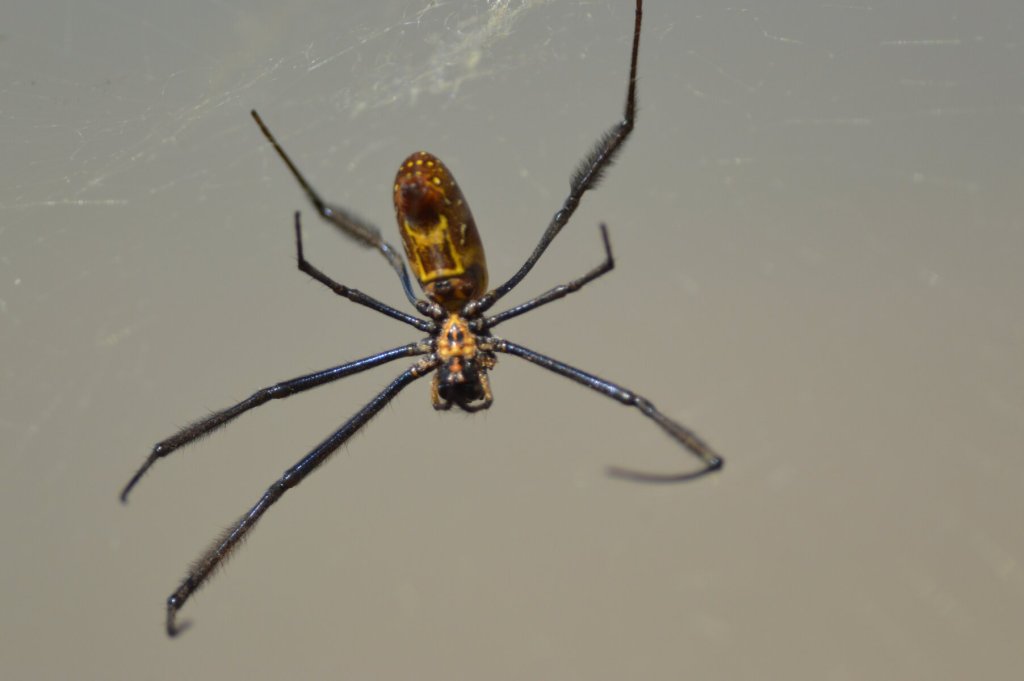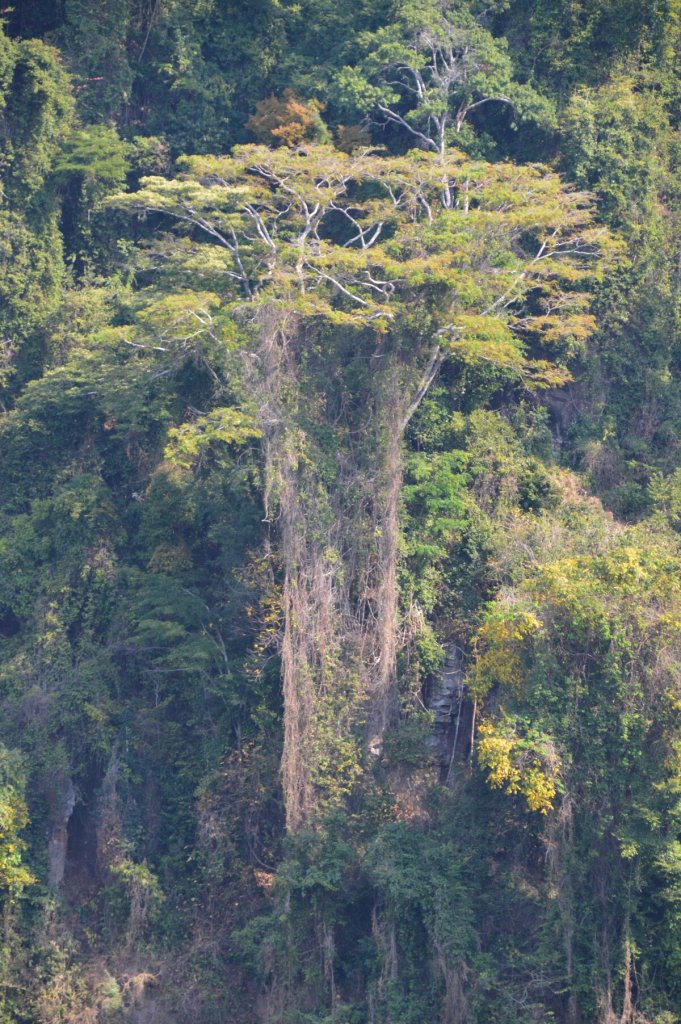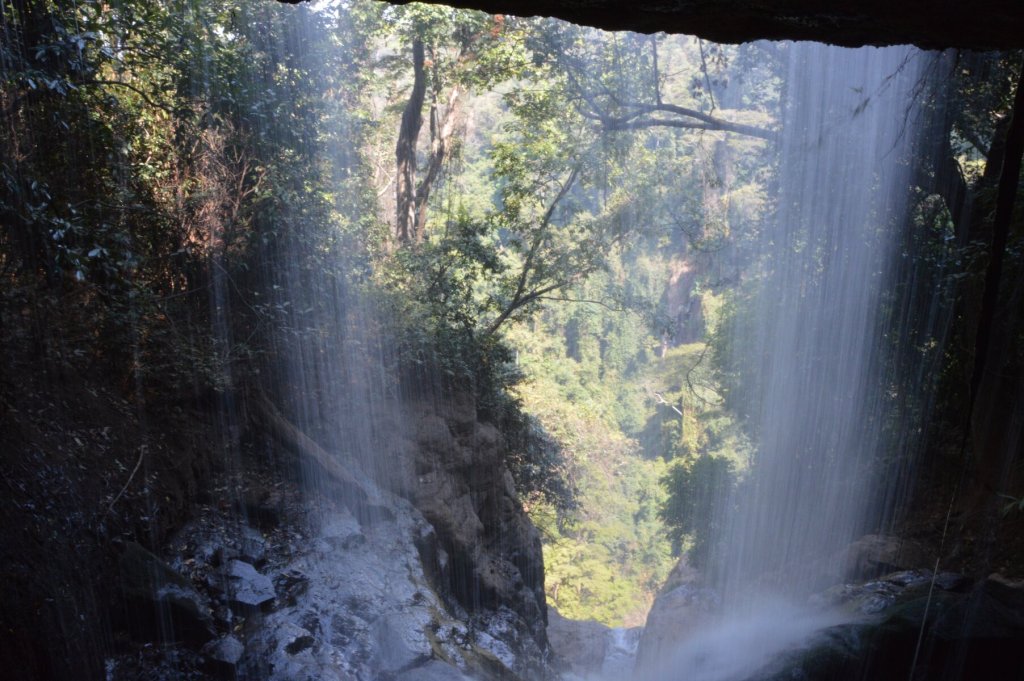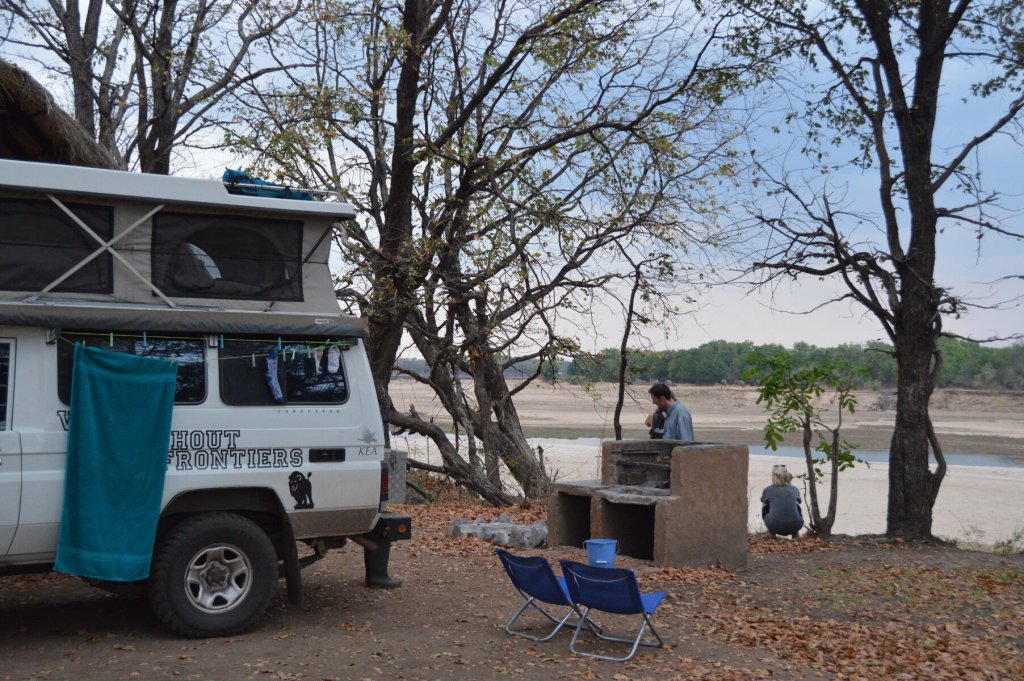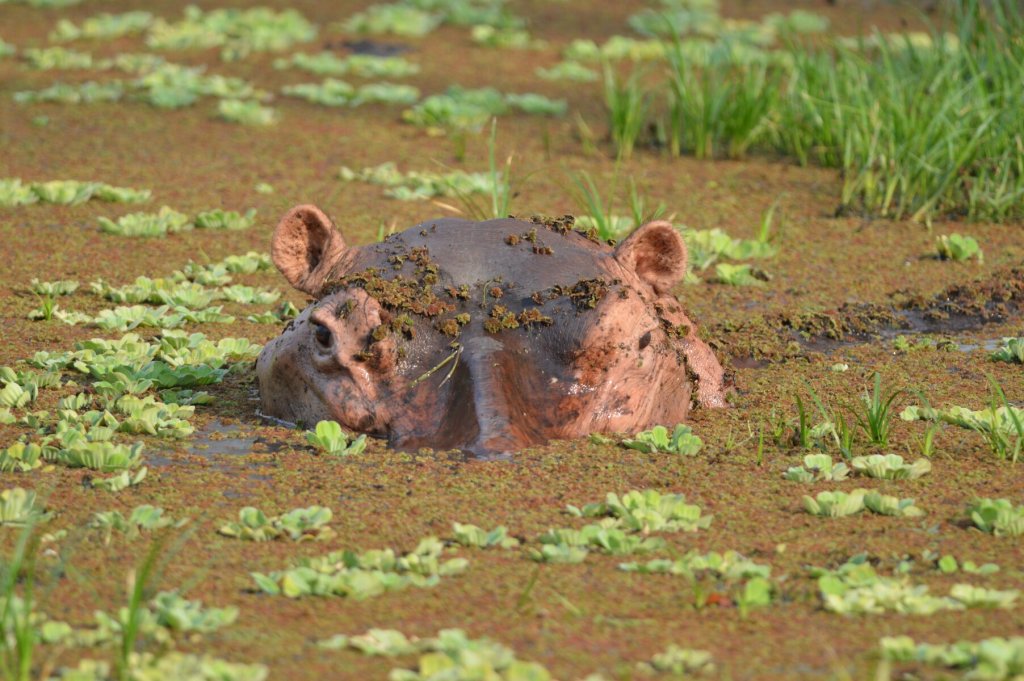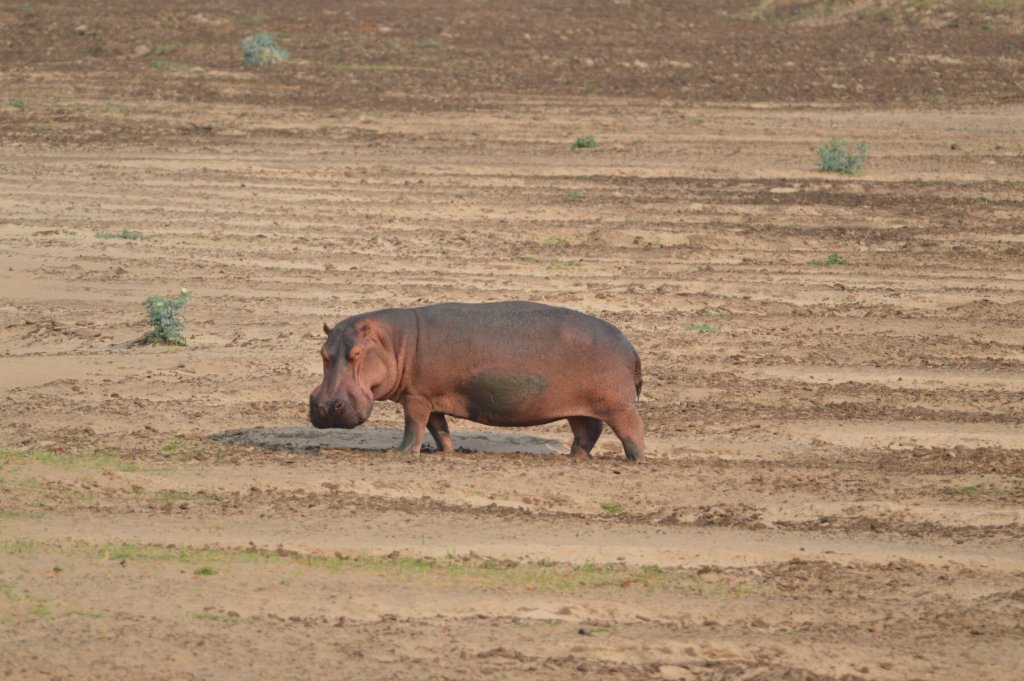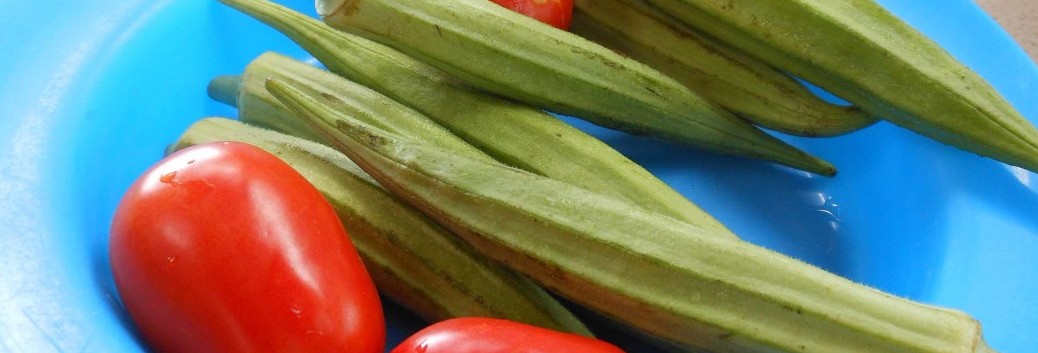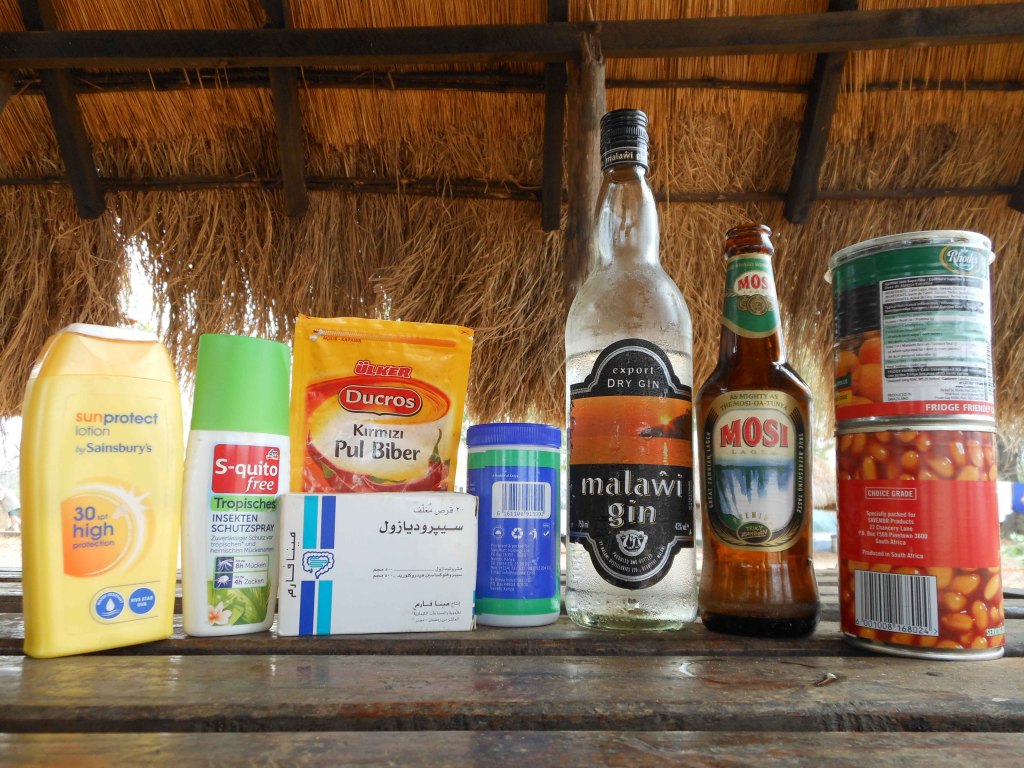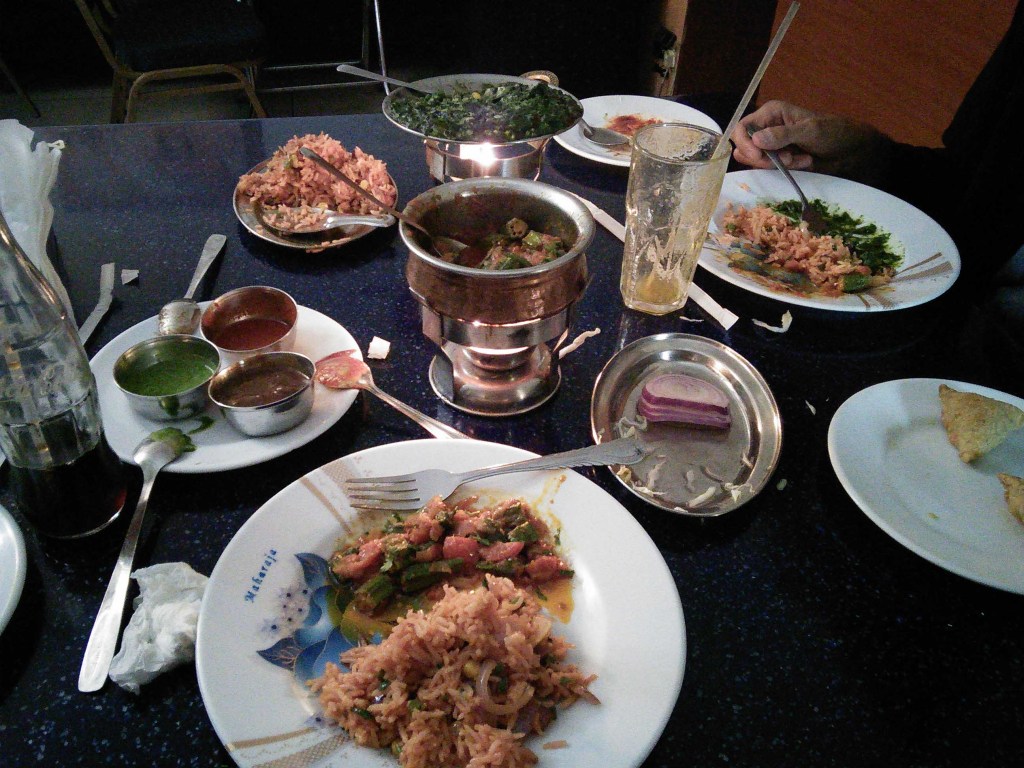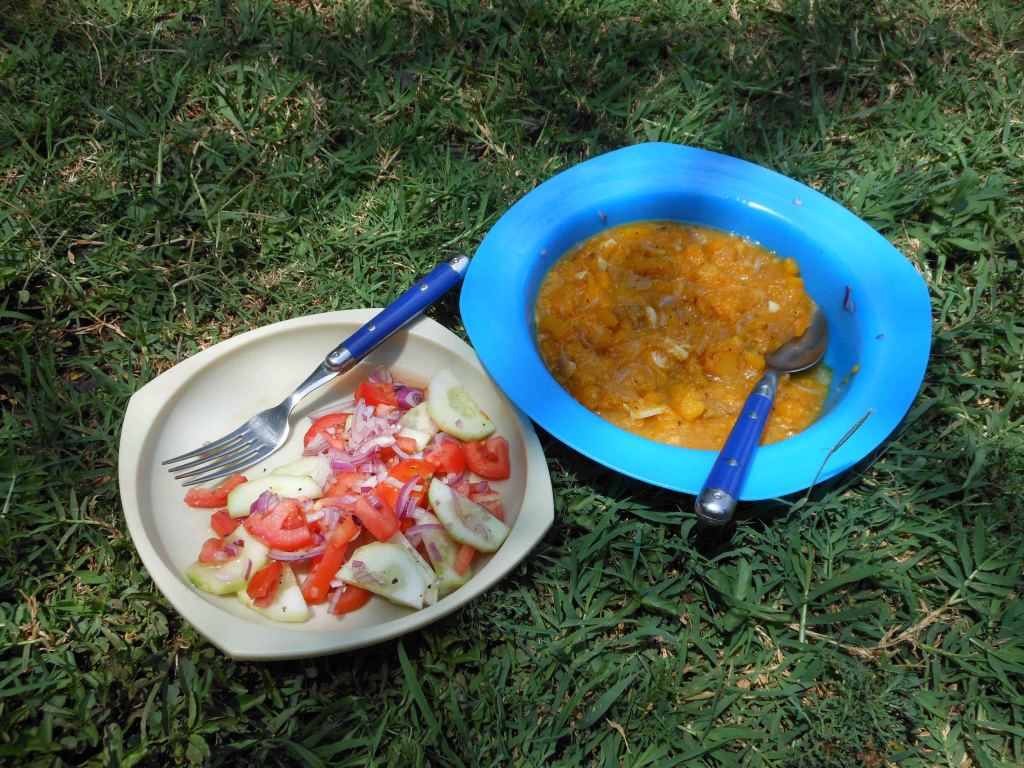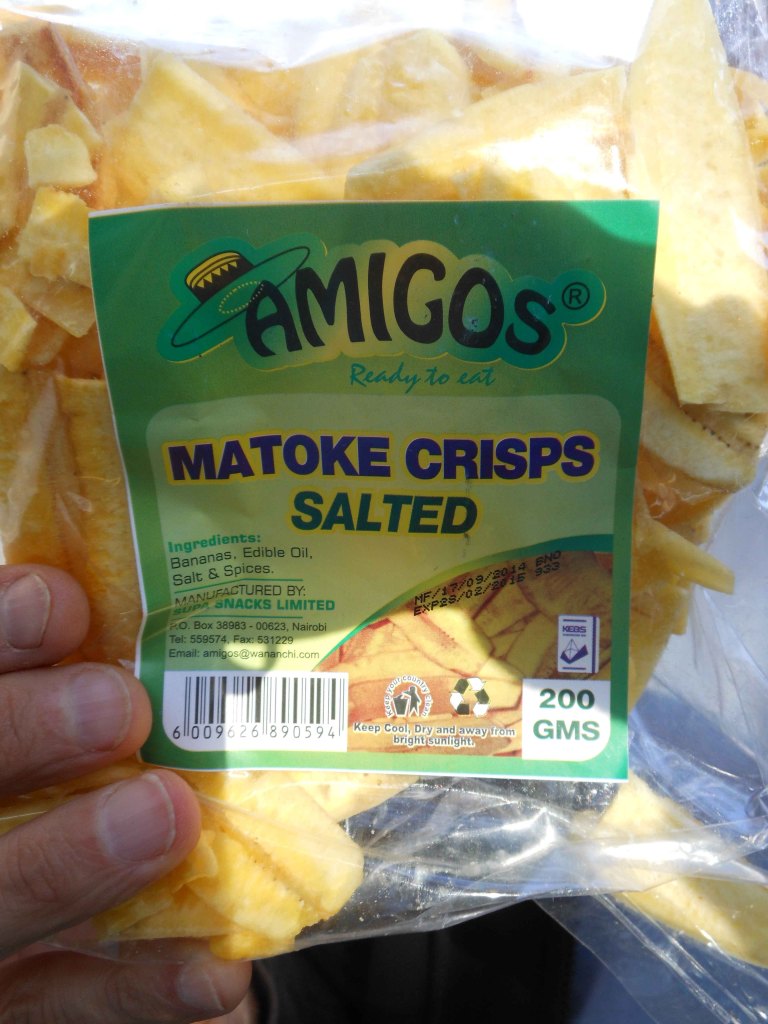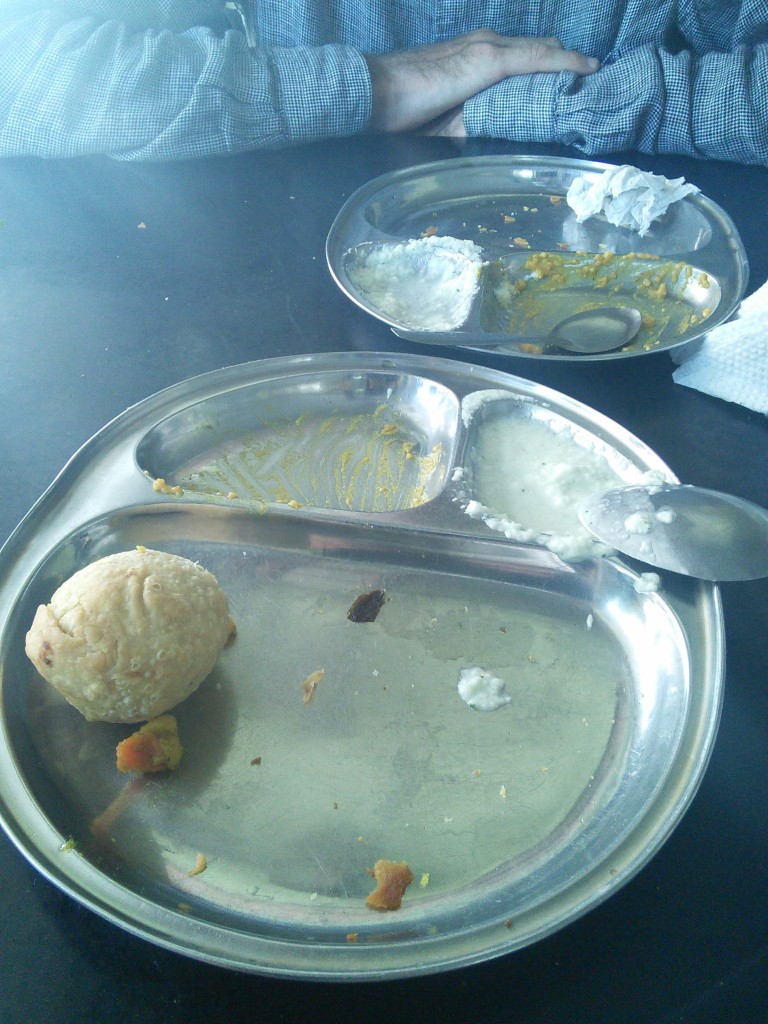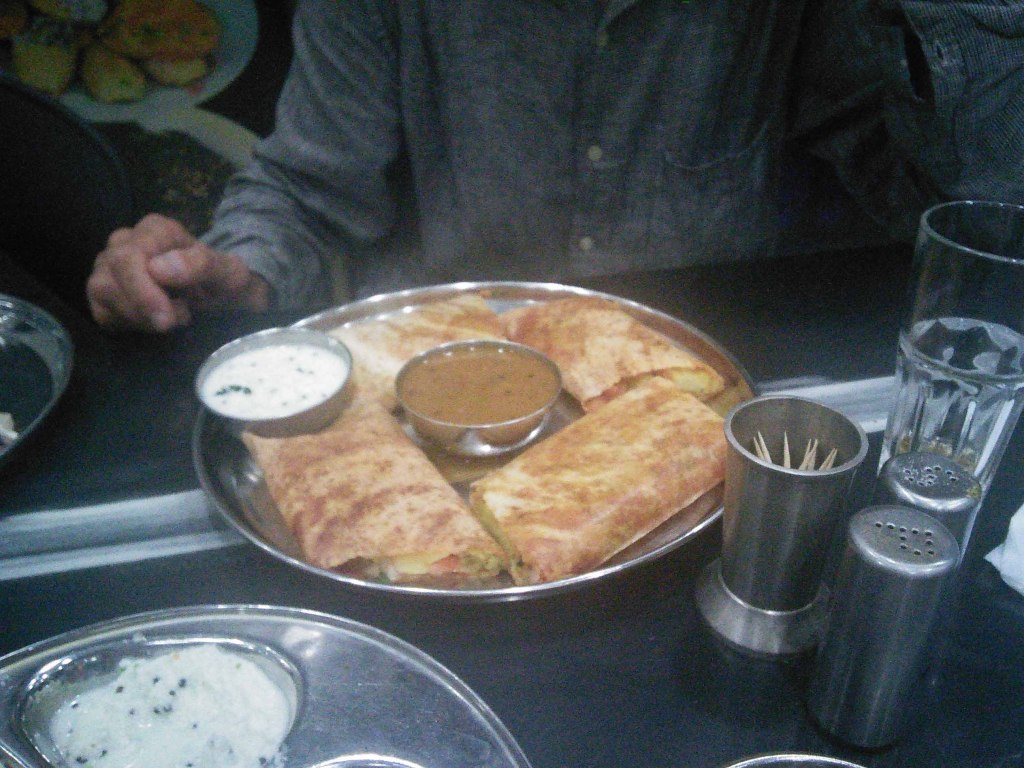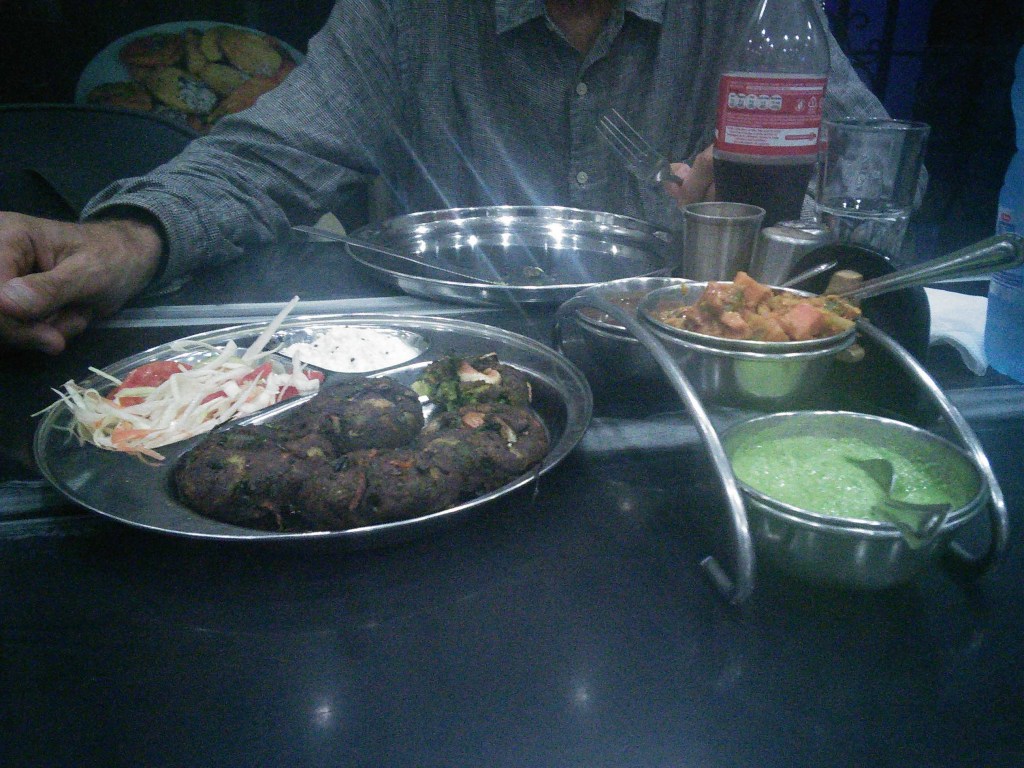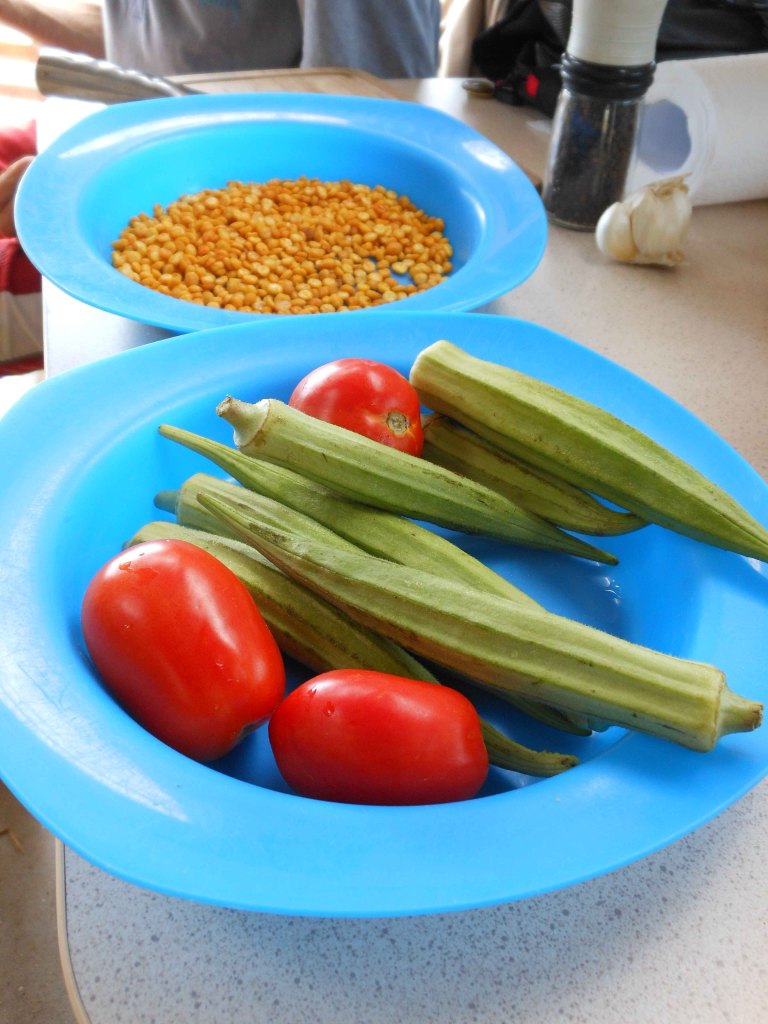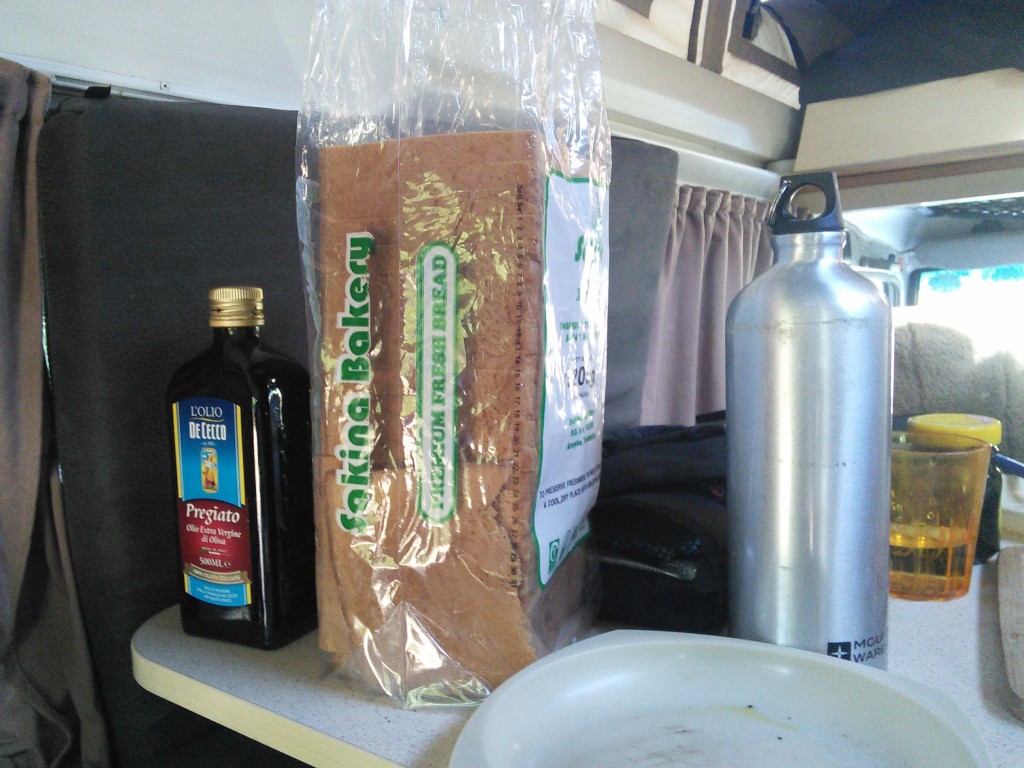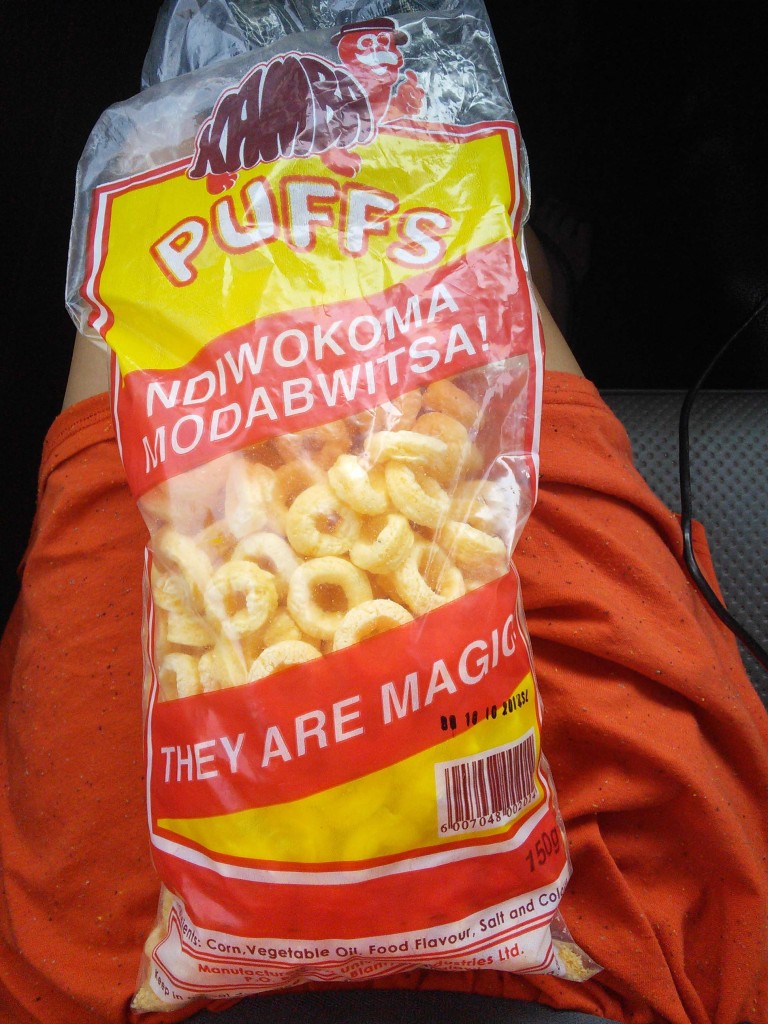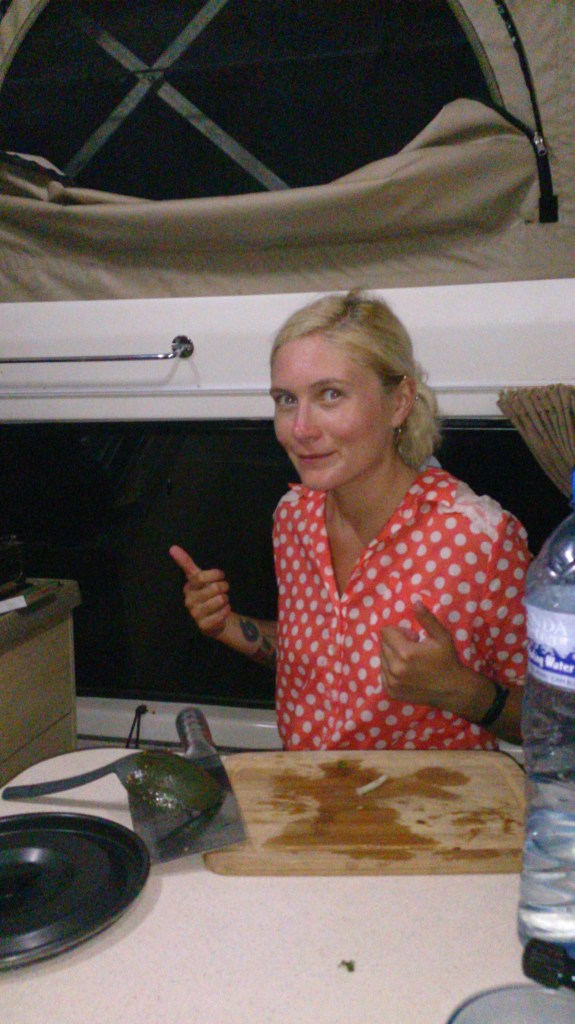It was the morning in the heart of wilderness in Botswana. We woke up uneasy, the night was full of noises – there was a thunderstorm and heavy rain, and some sort of animal, like a bat, kept attacking the sides of the car. As we slowly got up and started making coffee, the campsite got overrun by bees. Not necessarily angry bees, just very annoying and persistent. They kept coming into the car or hanging out by the open back doors, so much so that we had to run away from them twice.
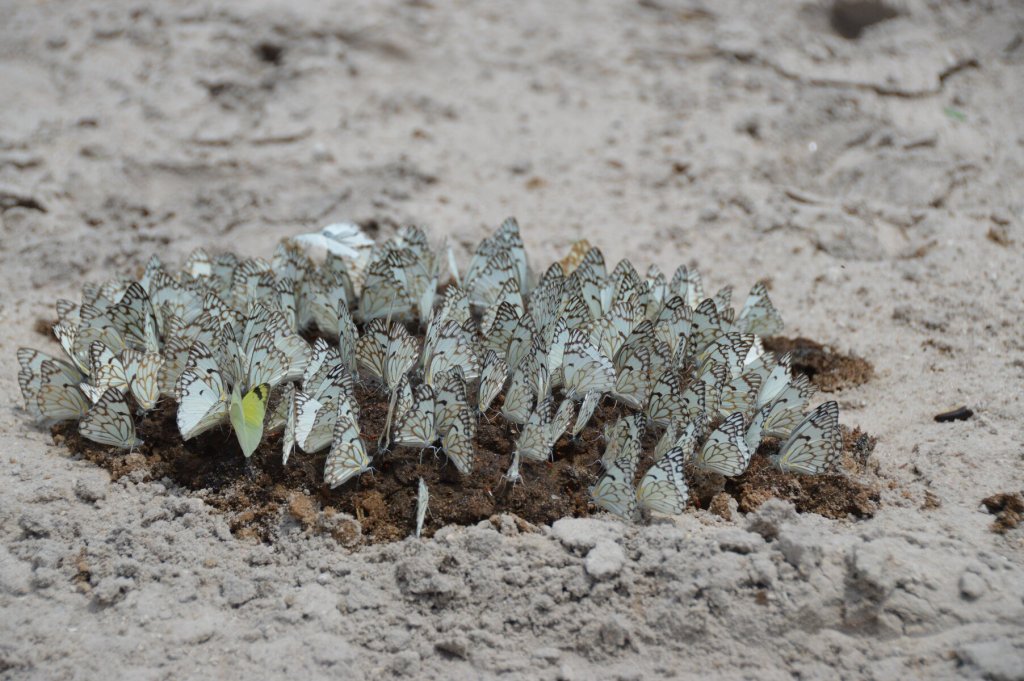
The main big dirt road was covered in elephants signs, but we only saw cattle and horses. We got on to the main highway back to Maun, and in the city went to the Choppies supermarket again – it has become our favorite, although they don’t sell alcohol. We bought some canned foods, seeing as how we weren’t sure whether the veterinary fences and checkpoints to the Central Kalahari Game Reserve would let us through with fresh produce. Among the cans was something called “Hot Chakalaka”, and let me tell you, the name does not get uttered without Jonathan singing “Chakalaka-laka-laka” and doing a silly dance. The cool thing about the branded Choppies chakalaka is that it has the sign “vegan” on it!
We had a short discussion where we were going to stay before our epic Kalahari journey, but the opportunity presented itself in the form of “Drifters” campsite just about 50 km from Maun east. There were no other campers, but we had a lovely chat with the owners/managers and spent a pleasant evening camped on the bank of the river.
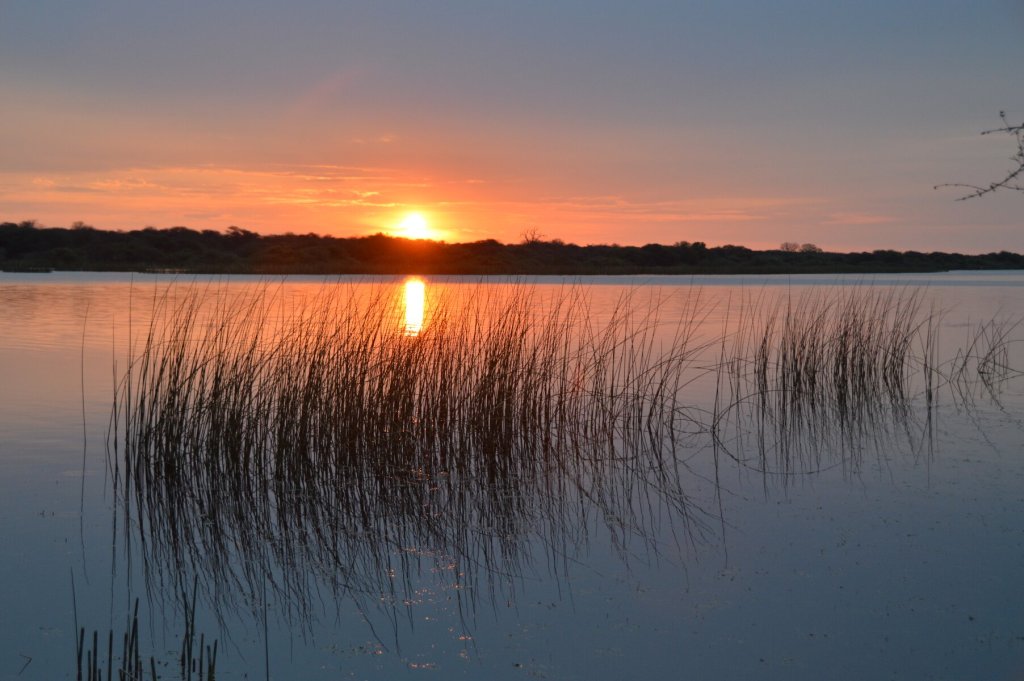
The next day we had a very early start to drive to the Matswere gate of the Central Kalahari Game Reserve. This involved driving down the paved road, and then turning directly south, and I mean 180 degrees south, down a dirt road alongside the “buffalo” fence (some controversial form of foot-and-mouth disease prevention they have in Botswana with the cattle/wildlife fences). The drive was a bit bumpy but went by quickly, especially as we encountered a kudu inside the two parts of the fence! He followed our car, matching our speed, for about 500m, and then as easy and graceful as ever could be, jumped the fence and was off into the forest. I guess the fence doesn’t really work on all animals.
And then we were at the Matswere Gate, picking up a photocopied map of the northern part of the reserve, and we were off into the wilderness for three days!
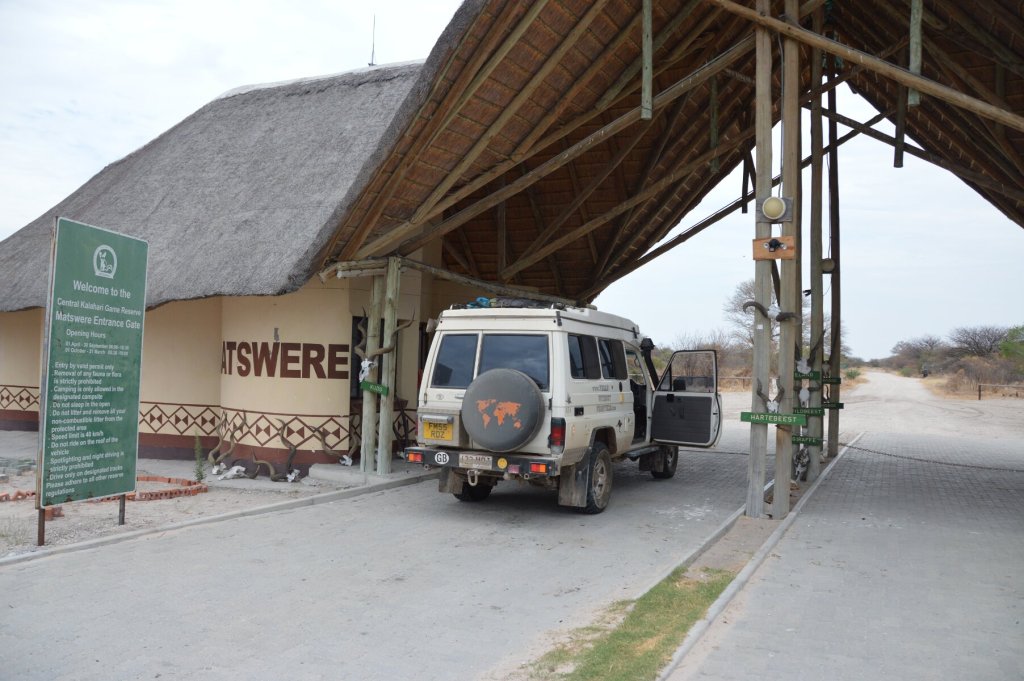
The first half of the first day we drove around without seeing vast amounts of wildlife together. By the way, here is something you should know about us traveling vegans: we did not have a picture book to identify the different animals, so we partially made them up: bambi to describe small antelopes, springooks which are in real life called gemsbok, impala and puku were interchangeable, and there was one particularly annoying type of bird that would fly up as we drove past it and cackled at us for some time until we picked up speed and it couldn’t keep up: we called it the clockwork bird. Jonathan is convinced they are not real birds at all, but rather strange devices for spying or some such nonsense. And of course the doggy-foxy things which are in reality three different varieties which we weren’t sure about when seeing them: wild dogs, jackals and special African foxes.
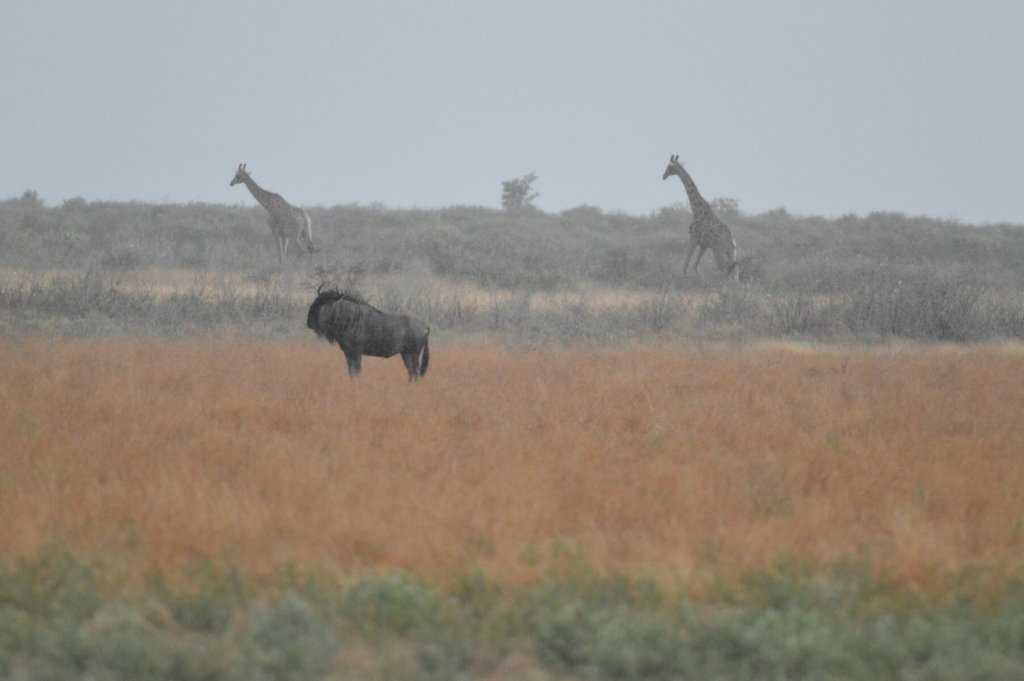
This part of the Kalahari desert is not what you would typically think of as a desert: it is covered in thorny bushes and short trees, the pans are open expansive spaces of short yellow grass. Some parts of the reserve look completely dead, burned, parched, while others are thick luscious greenery.
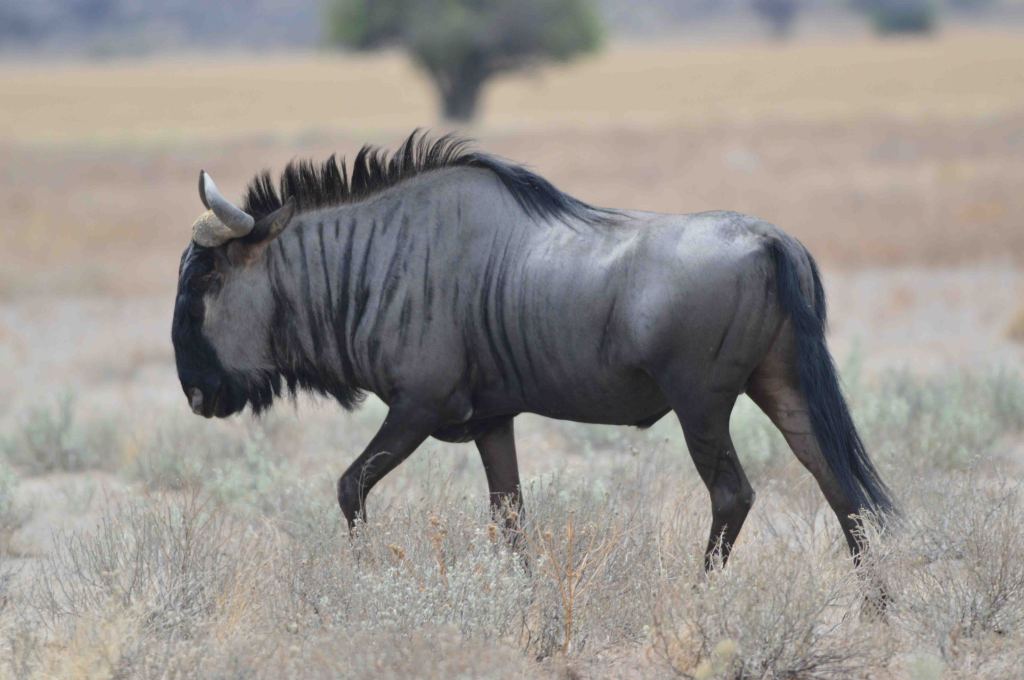
The long yellow grass is so inviting to felines that it is a real shame not to be able to spot them, they are very good at hiding and morphing into surroundings. On our first day we saw many types of horned-hoofed animals, such as gemsbok, impala, wildebeest, kudu, hartebeest, as well as many birds, both heron-like and vulture-eagle-like. We saw foxes and jackals, giraffes, and one lioness! Towards the late afternoon it suddenly started raining, and we drove without seeing anything out of side windows. When the rain cleared, we came upon Phokoje Pan, near our campsite, and saw a huge herd of gemsbok, with another huge herd of impala and some wildebeest all grazing together in the open. The gemsbok were making huge dust clouds because the males were running around like mad, fighting each other. We stopped to take photographs of the double rainbow that had formed above Troopy, and the scenery was spectacular.
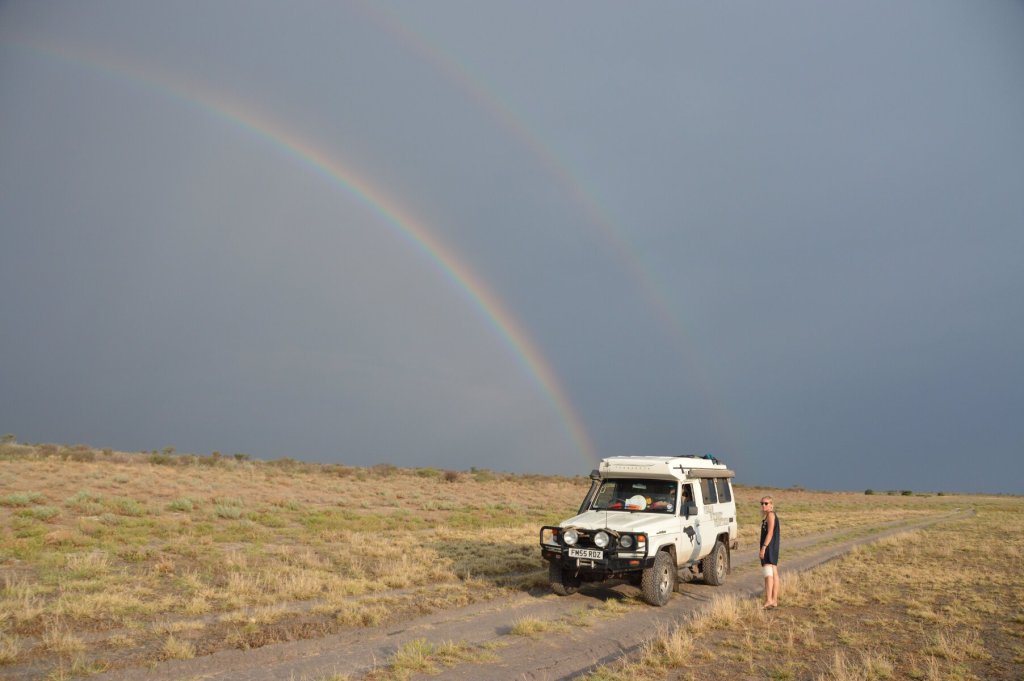
As we pulled ourselves away and were ready to drive the last 500m or so to our campsite, we came upon an animal, probably hartebeest, legging it at incredible speed first on our left, then crossing the track and disappearing off on the right side. I thought to myself that it must be something other than us, and of course immediately we see it: a lion! We slowly drove up closer and stopped, with the engine off, to admire the great feline. She was all alone, which is very unusual, and not very interested in the huge herds of dinner that were grazing on the pan, nor the hartebeest that ran away from her. She kept picking at something on the ground, possibly finishing the last bits of her latest meal. She looked over a few times at us, but again seemed vaguely uninterested in us, mere humans. Eventually she finished and slowly wandered off into the bushes. It was a bit unnerving to discover that our “campsite” was slightly uncomfortably close to the sighting of the lioness.
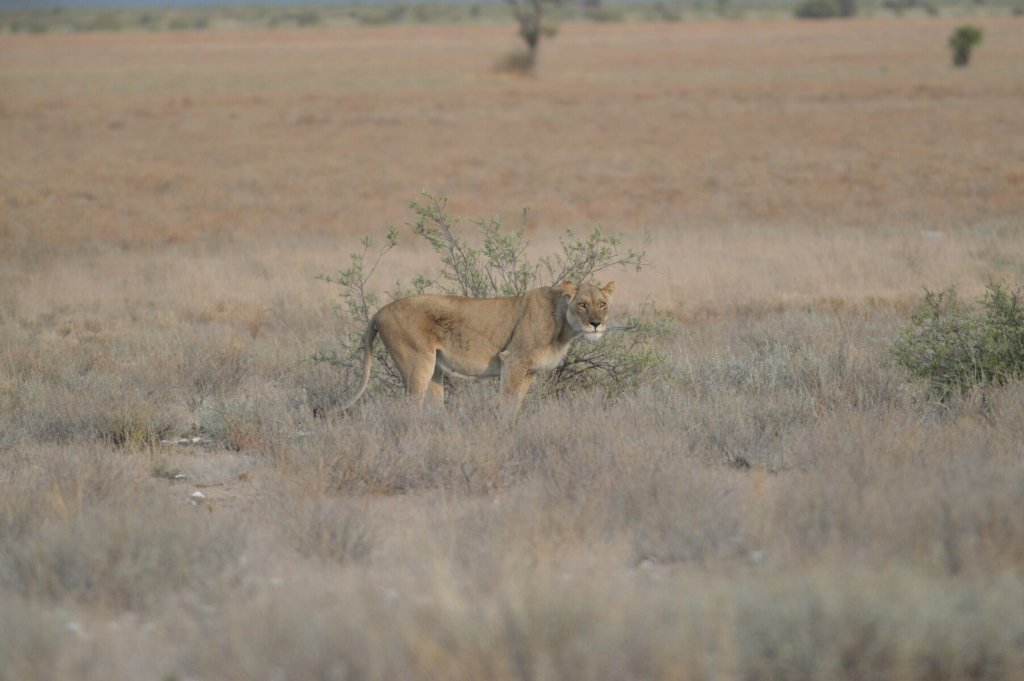
These campsites in the park are truly completely wild: they have a hole in the ground and an empty bucket where I guess you are supposed to pour your own water for showering. There is also a fire pit, and nothing else. The great plains of the Kalahari, everything it encompasses, all the dangers, all are out there to get you while you sleep!
It had just rained, so there was a stampede of millipedes in the wet sand where we parked. One of them was trying to climb up my foot, and then I sneezed really loud and it actually got scared and curled into a ball! What strange creatures. We had no visitors in the evening, but I can’t say with certainty about the night – I slept like a log.
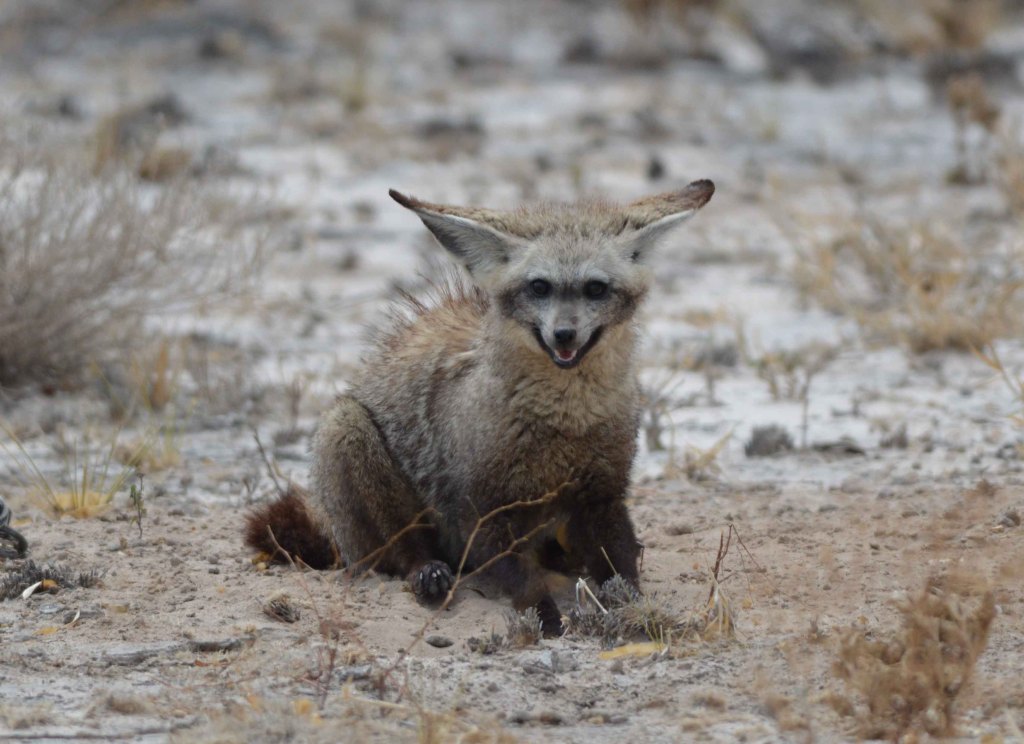
In the morning we packed up quickly and drove back to the pan, to see if we could spot the lioness again, but alas, we weren’t so lucky. The herds of antelope were still there, munching away and dozing off in the morning sunlight. It was actually a cold, wet morning, not the usual desert weather of course, but then the rainy season is just coming to Botswana now. We drove through Piper Pans, spotting many more foxes this time, and what looked like a dragged trail on the sand from the side of the pan into the thick bushes – possibly a cheetah or a leopard, but impossible to see through the vegetation. When we got closer to Xade, southwest end of the reserve, we started seeing more and more traces of elephants. After Xade we drove to Xaka, our campsite, only to get confused by the lack of signs of any kind in this part of the park, and the lack of the “hole” facilities at this camp. In some ways it is better that way, instead of using the smelly spider-covered “hole” that many campers before have used. The terrain near Xade and Xaka is similar but it seems the rains have gotten here first: the scenery was more green, the grass was full of vitality, and the thorny bushes were particularly nasty, especially to Troopy’s sides. The sandy track was covered in a thin layer of wetness, which actually made the sand less tricky to drive on.
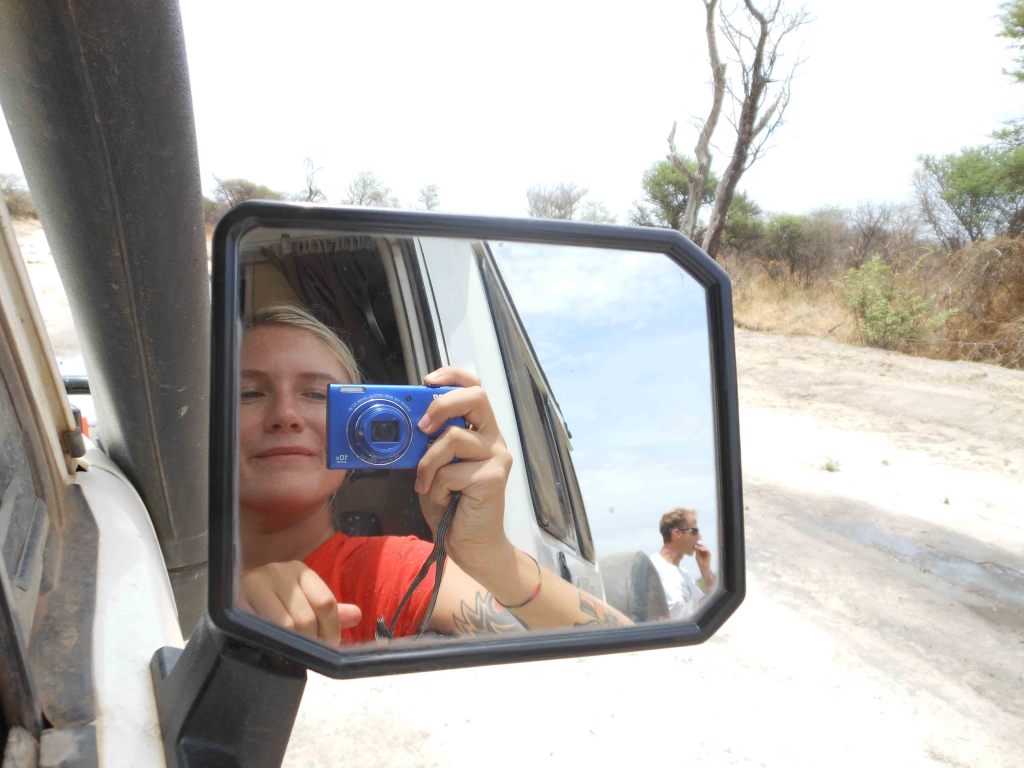
The next morning we packed up really quickly and drove to the nearest watering hole to spot any animals, but there were only birds. We had a quick breakfast and had a long (or so we thought) drive ahead of us to the Southern gate. The track was truly isolated at this point, there were many footprints on the track, some including cats and elephants, but we didn’t see anything until suddenly I spotted an elephant’s back and ears in the bushes. By the time we reversed the car, he was already gone. We met two German cars in a convoy going the opposite direction, but that was it for people in that part of the reserve. It started raining more heavily towards lunchtime, and soon the tracks became more muddy than sandy, the car was sliding from side to side or jumping up and down from the fresh tracks of the German car. It was around this time we also realized that the previous day, when we stopped for a snack, we forgot to put our cardboard box back in the car, embarrassingly littering the reserve with the box which contained a pair of Jonathan’s vegetarian shoes, a water bottle and some socks and plastic bags.
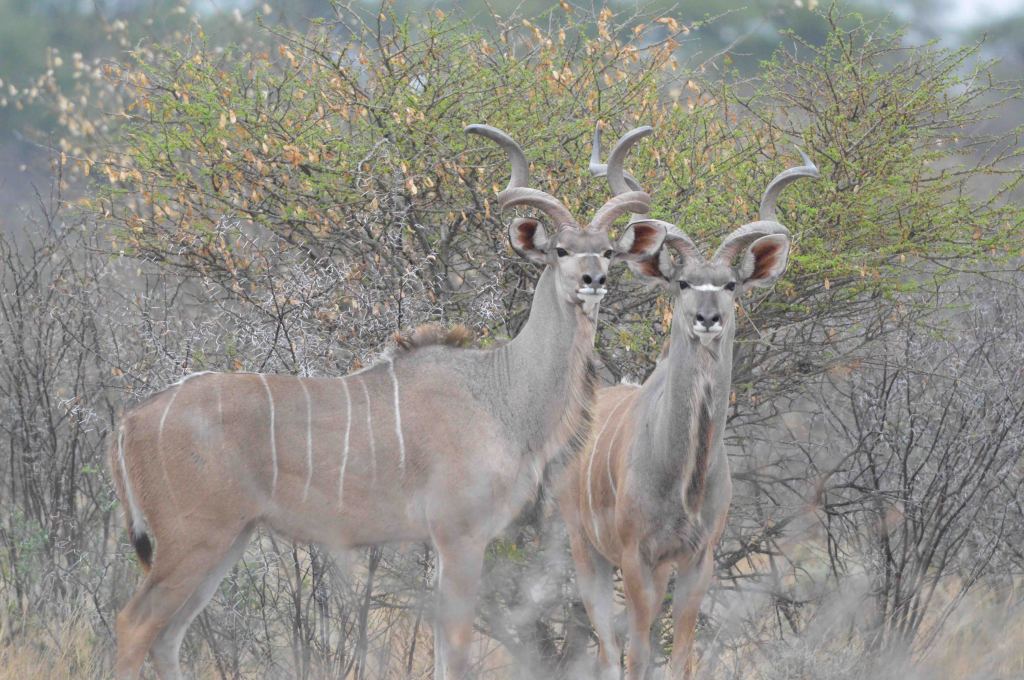
Before hitting the Southern Gate, we passed one of the very few San villages still left in the reserve. One of the few issues Botswana faces as a country is the re-settlement of the San people from the Central Kalahari Game Reserve, and it is still a raging human rights debate. We also saw giraffes again and the odd antelope-type animals, but as soon as we exited the reserve it was all cattle again. We had a very long, wet, miserable drive from the southeast point of the park down south to the main highway, and then from there to Kang. We got to Kang already in the dark, and had a very hard time finding accommodation, as it turned out later, because of the power cut. But what an exciting and beautiful storm it was that brought the electricity down! As the sun was starting to set, coloring the sky red and orange, there was a huge thundercloud in front of us on the massive straight flat road. The orange sun and its surroundings were underneath the cloud, behind a wall of rain, and the thundercloud was a menacing dark purple and blue and heavy on top. There was spectacular lightning as well, and the whole ordeal felt like the end of the world. The best bit – we had to drive through it.
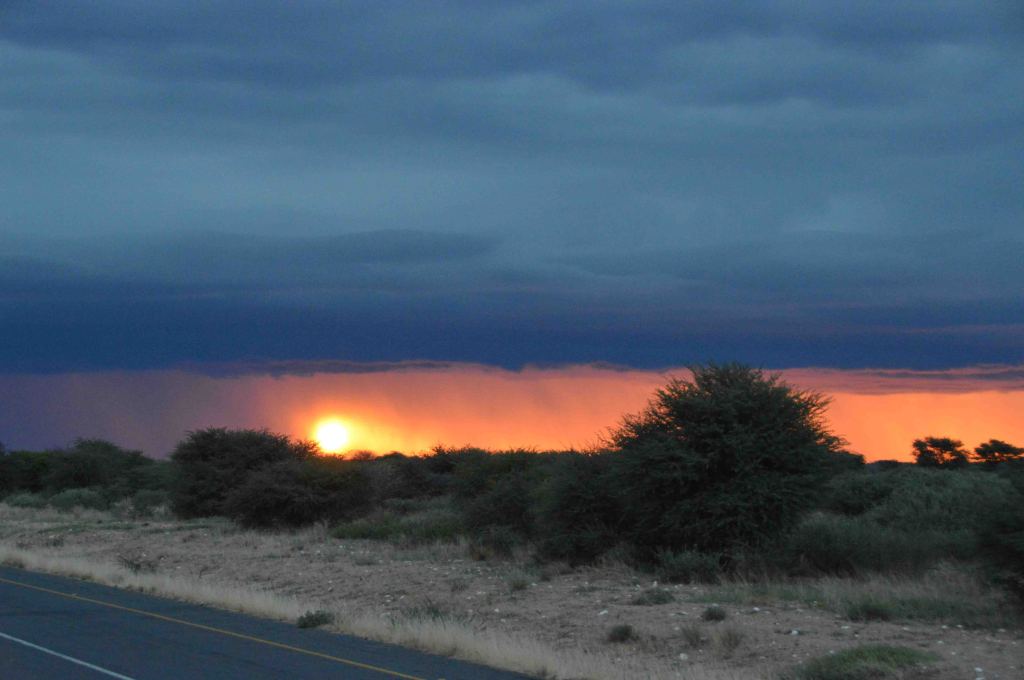
In Kang another strange phenomenon happened – after finding a few accommodation spots in the dark, we were told twice that the place was full – but then a kind manager in a guesthouse took pity on us and let us stay in a communal part of the establishment with a clean room, TV, shared (clean) bathrooms and a lovely rowdy crowd outside – all without working lights! Jonathan was so tired from the whole day of rough driving that he fell asleep mid-cider. I was too busy getting the knots out of my hair to notice.
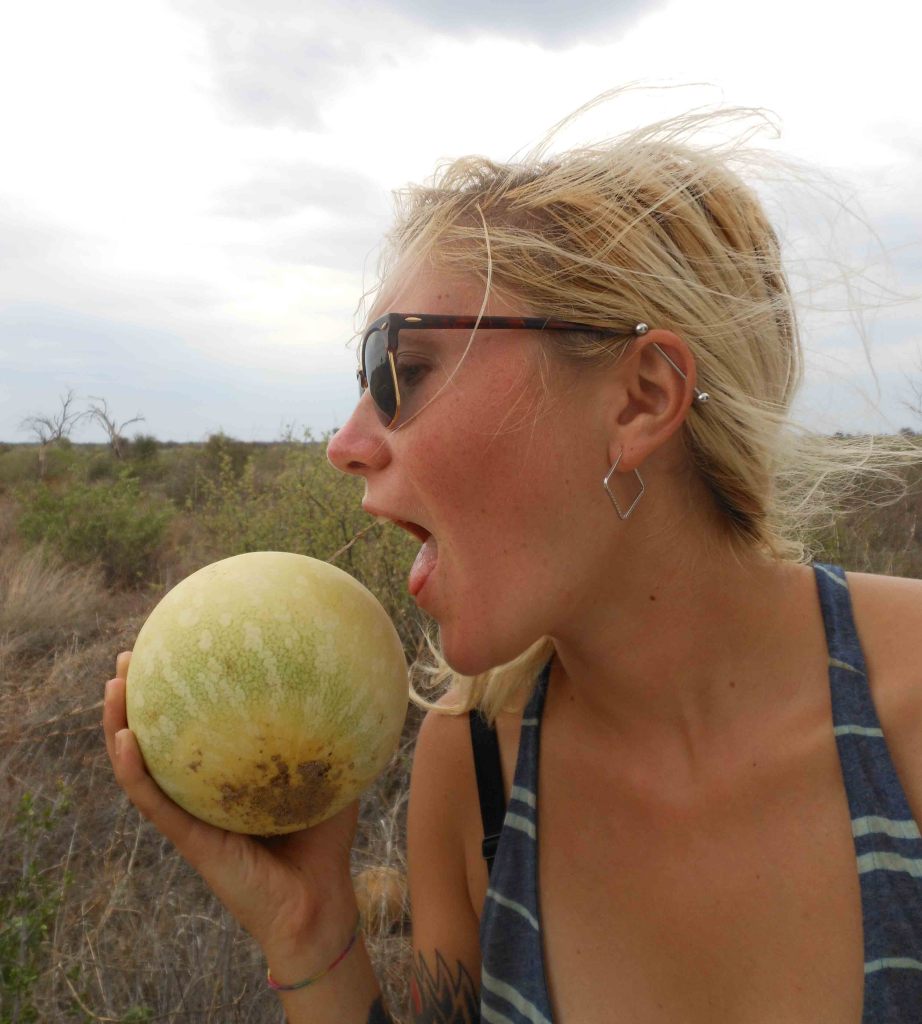
The next day I lost one of our bets – we decided it would be fun to find out what would happen if I didn’t talk for 24 hours. I immediately lost it in the morning, because I woke up and asked what time it was. Then we tried to do it again during the day, and I lasted one hour. I have a cold bucket of water coming to me at some point when the knee heals. We drove to Ghanzi, with tons of millipedes and dung beetles on the road and (the latter) hitting the windscreen. We even saw a vulture devouring a small feline on the side of the road! From Ghanzi we went to stay at Thakadu Camp – and at night one of the other cars got broken into and their camera stolen! Lucky it wasn’t us. There were also a billion strange bugs inside and outside of Troopy, we spent the last hour before bed basically butchering them – sorry fellow vegans! But massive flying ants and beetles of all sizes landing on your face when you’re falling asleep is just about the most unpleasant thing there is. The next morning we headed to Namibia!

